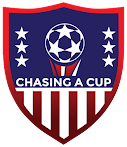

USMNT
MLS 2022 — Top 25 American U21s
Published
4 years agoon
Background
I have researched rosters, read preseason reports and watched film, all in preparation to decide who I think will be the most impactful U21 American players in the MLS in 2022. This isn’t a list of the most talented U21s in MLS (born in 2001 or later). It’s a list of who will have the biggest role and who will make the most of that role. This list is based on anticipated amount of minutes, system/style of play fit, the player’s talent level and their supporting cast. Injuries are something we do not hope for nor can we predict, but that will also play a massive role in what young players get an opportunity this season.
LIKELY STARTERS
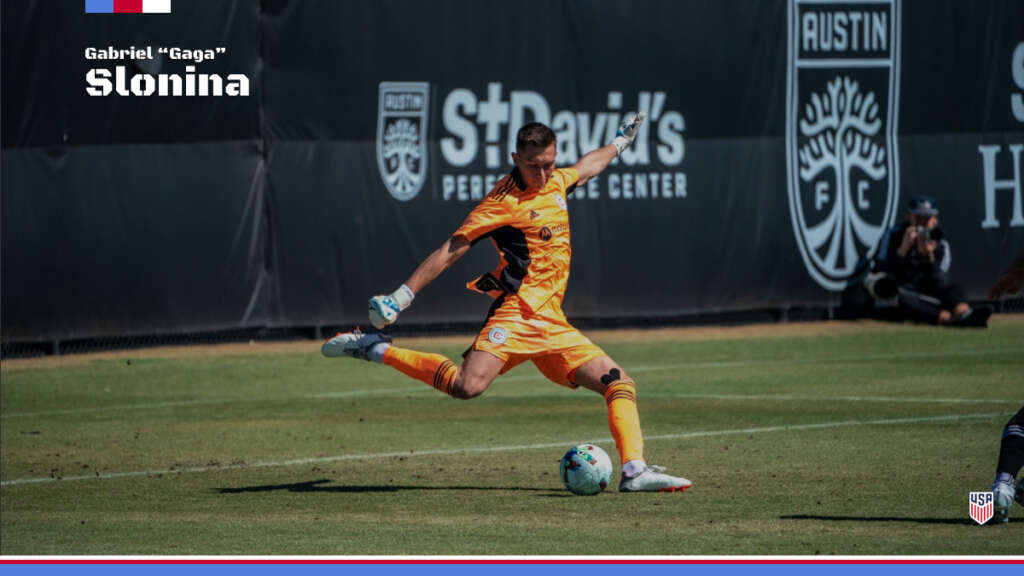
1 | Gaga Slonina, Chicago Fire (2004)
Club Position: GK / Ideal Position: GK
Gabriel “Gaga” Slonina is a Polish-American who took over as Chicago’s #1 goalkeeper in September of last year at the very young age of 17. It’s very rare for goalkeepers to break through this young. Gaga is a special talent and it will be fun to see him develop this year as Chicago’s #1. He is already the USYNT U20 number 1 and has been called into multiple USMNT camps. Gaga tops the list not just because he is really good, but he is also going to play EVERY game, and while I think Chicago is improved, he is going to have a lot of work to do between the pipes. What’s crazy is that there very well respected analysts out there that think there is another 2004 Chicago goalkeeper with a higher ceiling, Chris Brady, who will likely be Gaga’s backup this year. Club Brugge was interested this winter. Major European clubs are awaiting, for both.
What makes him special
Gaga’s mentality and instincts for the game are pretty incredible for a 17 year old goalkeeper.
Key growth area
His shot stopping technique will continue to improve as he continues to get reps. The tools are there, he just needs to be a little more consistent.

2 | John Tolkin, New York Red Bulls (2002)
Club Position: LB / Ideal Position: LB
John Tolkin isn’t the most well regarded NYRB player on this list, but I think he is going to have the most impact because when he is fit to play, he should be a nailed on starter this year and he will be looking to build a case for a Euro transfer. John played a lot of minutes last year for NYRB and logged one goal and one assist playing LB, LWB and DM. His best position is definitely LB and with Andrew Gutman back to Atlanta after his loan with NYRB, I think John is going to be one of the best LBs in all of MLS. I think John is one of the most underrated USMNT prospects. I rate him above another 2002 LB that is playing in Germany, George Bello. There are reports that Leipzig brass are big fans.
What makes him special
John is a highly technical and instinctual player that knows how to work out of tight situations and read the game defensively. He is also a high level passer and crosser. I expect a 7+ assist season this year.
Key growth area
John doesn’t have the profile to be an elite athlete, but if he can get a little bit stronger and more explosive it will help him increase his ceiling a little bit.

3 | Caden Clark, New York Red Bulls (2003)
Club Position: CM / Ideal Position: AM
Caden Clark is a top 3 player within the 2003 US group. He can play as an 8, 10 or winger. Tom Bogert is projecting a 4-3-3 lineup for NYRB this year and he is also projecting that Caden will start as one of the 8s, which would be fantastic for Caden’s growth and his transition to USMNT. Caden told Tactical Manager in an interview that he played as one of the 8s in the December camp, but plays winger for the U20s.
He was off to a roaring start in MLS last season and was on his way to the 2021 Gold Cup before an appendectomy disrupted his season. He started to regain his high level form at the end of last season and looks to build on that and deliver more consistency this year. It’s been a little bit of a confusing offseason for Caden. He was purchased by RB Leipzig last summer and was planning to move on January 1 of this year, but Leipzig decided to loan him back to New York where both sides felt he could get more playing time and further his development. He is also going to be a key player for the 2023 U20 World Cup and 2024 Olympic qualifying that is happening this summer and being in the USA will make that easier to manage. If he consistently delivers his best stuff, he’ll be in the plans for Leipzig next year and should start garnering more USMNT looks.
What makes him special
His ability to create high quality chances in low probability situations, he is a high level playmaker, with very few glaring gaps in his game.
Key growth area
Consistency, Caden shows flashes of brilliant play, it just comes and goes too often right now.

4 | Cade Cowell, San Jose Earthquakes (2003)
Club Position: LW / Ideal Position: Second Striker
Cade was in and out of the starting lineup last year, but a consistent sub throughout the year. I’m betting on him solidifying a starting role, most likely as a winger, but potentially as a #9 and there are rumblings that he has been playing some wing back in preseason. I’d continue to play him as a #9 until he proves he can’t score consistently. It’s so hard to find high quality strikers, so if Cade can score consistently, that is where he would be most valuable. I like RWB as a plan B if the technical side never materializes too much. Cade will be another player that will play a key role this summer for the US U20s. My hope is he plays as a striker for that team because the depth behind Ricardo Pepi, who likely won’t play for this team, is very thing. If he is a little more consistent at the beginning of the season he will be on his way to Europe this summer or in January. He recently signed a contract extension with SJ and that will help in those negotiations.
What makes him special
His physical profile, Cade is a blue chip athlete with pace and strength that are hard to match.
Key growth area
He is still very raw technically. He shows flashes of dribbling ability, passing and finishing, but it’s highly inconsistent and pretty rough at times.
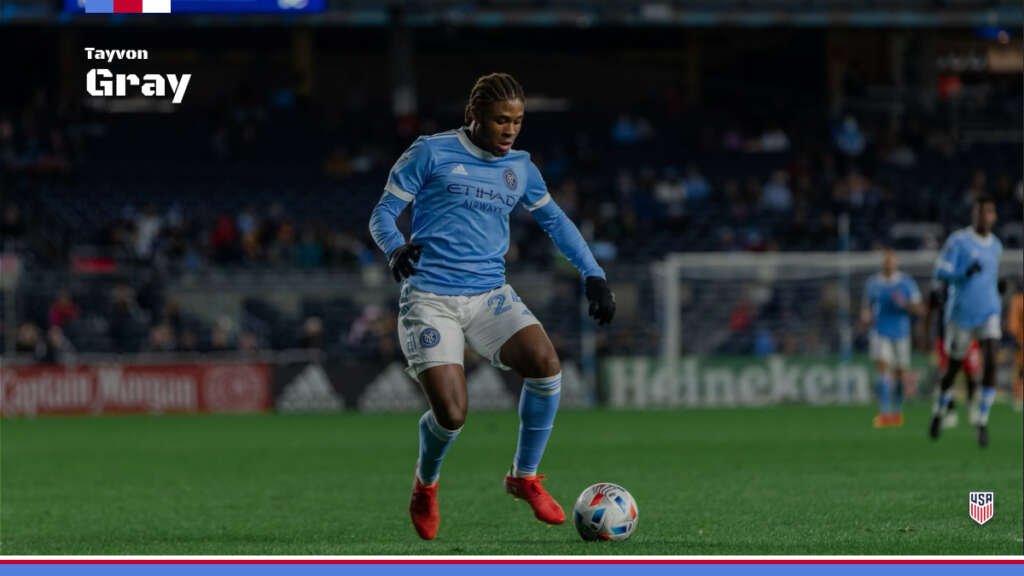
5 | Tayvon Gray, New York City FC (2002)
Club Position: RB / Ideal Position: RB
Tayvon was mainly a squad player that rarely saw the field for the majority of last season. Tayvon has been primarily a center-back in his academy and YNT days, but when Anton Tinnerholm went down with injury, Tayvon became the starting right-back. He played in every minute of all four of New York City FCs playoff games in route to a MLS Cup, with an assist in the Quarter-Finals against New England Revolution. A game where he also powered through the entire extra time period with injury. I am banking on Tayvon building on that and holding on to the starting RB job once Tinnerholm is back from his injury. If Tayvon has a big year, he may be another American that takes his talents abroad.
What makes him special
He’s a very strong 1v1 defender with a great mentality and awareness due to his youth experience as a central defender.
Key growth area
Tayvon’s ceiling is going to be based on how much he can develop offensively. I saw great strides in this area last year where he became a more effective piece of NYCFCs attack and showed the ability to deliver some dangerous crosses into the box.
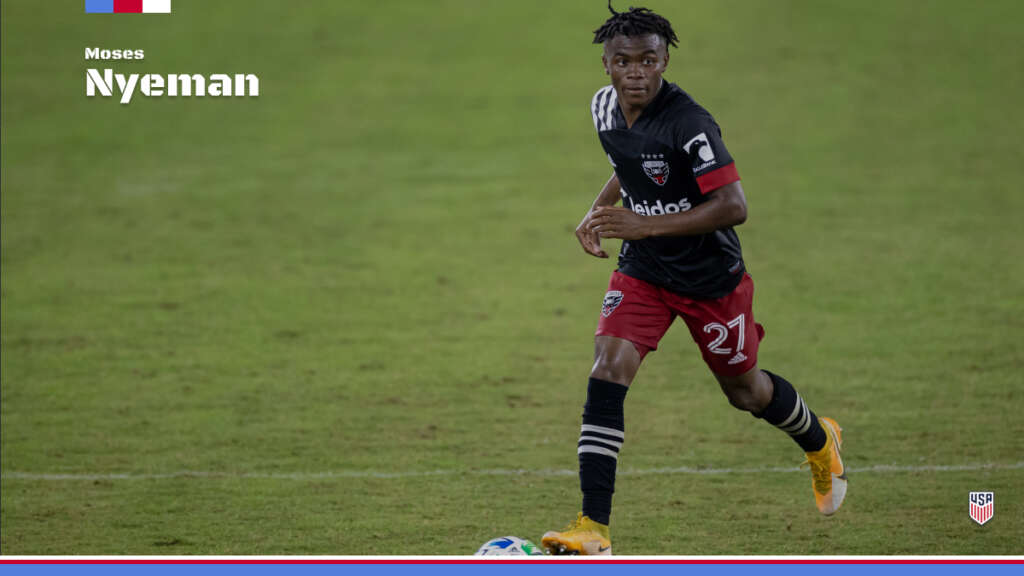
6 | Moses Nyeman, DC United (2003)
Club Position: DM / Ideal Position: CM
Moses Nyeman is another talented 2003 that was being considered for the 2021 Gold Cup. Injuries have kept him from joining a recent US U20 camp, but I expect him to be a key player for that team this summer. If he is fit, he should be called to the next U20 camp in March. The big question for me is where he plays. He can play both the 6 and 8 position and the bigger need for the U20s is probably at the 6. For DC, he plays as one of the central midfielders in a 5-3-2. He was starting pretty consistently and coming off the bench last year, but he couldn’t shake the injury bug. It looks like DC is going to rely on youth early in the season and I think Moses is going to have a big role. He is one of the top 10 prospects within a very talented 2003 class.
What makes him special
He has great ball control through his touch, dribbling ability and understanding of how to use his body to protect the ball. He reminds me a lot of Yunus Musah in the way he can carry the ball to break lines, he’s just not quite as dynamic and powerful of an athlete as Yunus.
Key growth area
The easy thing to say here is his size, but I actually don’t think his size shows up often as a problem. He plays bigger than he is and appears to be naturally strong. I’d like to see him arrive more in the box and have more of an impact as a scoring threat.
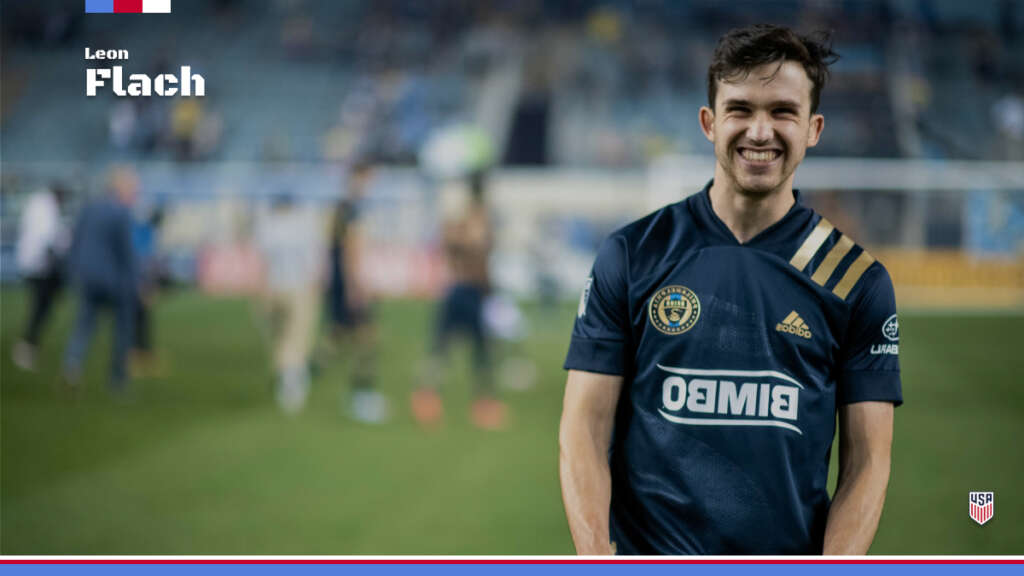
7 | Leon Flach, Philadelphia Union (2001)
Club Position: CM / Ideal Position: DM
Leon Flach moved from St. Pauli in the 2. Bundesliga in Germany to Philadelphia last year and the move was a very positive step in Leon’s career. Leon had 34 appearances and over 2600 minutes last year for the Union, mostly as central midfielder and at times as a left-back. Leon is high on this list because he is a projected starter on a good team. He isn’t a high ceiling prospect that is going to put up huge numbers, but he is going to have a big impact on the team and he is going to log huge minutes.
What makes him special
He is a consistent, well rounded and low mistake player that makes him very reliable in the midfield.
Key growth area
He needs to develop an above average skill in either his passing and chance creation or his defensive cleanup ability as a more defensive minded midfielder. He’s good at a lot of things, but not really great at anything.
SPOT STARTERS / HIGH IMPACT SUBS

8 | Paxten Aaronson, Philadelphia Union (2003)
Club Position: AM / Ideal Position: AM
Paxten is the younger brother of USMNT and RB Salzburg standout Brenden Aaronson and Paxten is on a very similar trajectory as his older brother. Philadelphia manager, Jim Curtin, has been on the record stating that Paxten is further along in his development than Brenden was at this age. Many believe, including myself, that Paxten’s ceiling is higher than Brenden’s. He’s stronger and has the potential to be a better shooter/finisher. Add Paxten to the list of top 2003s that will be key figures in the upcoming U20 tournaments. Paxten started getting more regular minutes (590 in total) at the end of last season and his first of three was a very impressive goal. He might not get a lot of starts this year, but he’ll be a more consistent impact sub, probably in the area of 900 to 1,000 minutes and I think he’ll shine in that role. This could be the year he joins his brother in Europe.
What makes him special
Paxten is a very good playmaker and creative finisher. He has goals in his legs as they say. He also has that relentless motor that makes his big brother special.
Key growth area
Needs to continue to grow into his body and become stronger so he can take on the wear and tear of a full senior team season.
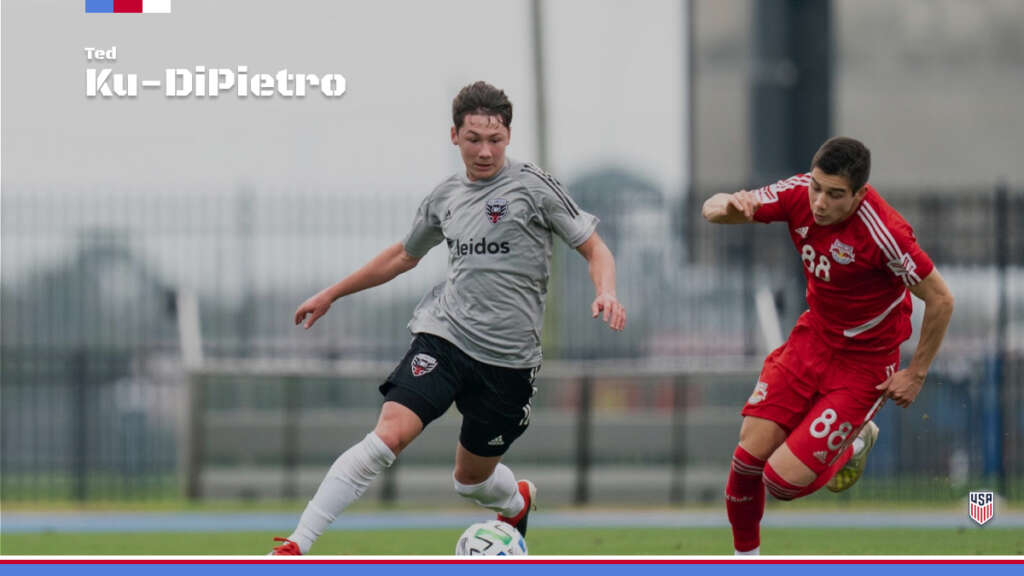
9 | Ted Ku-DiPietro, DC United (2002)
Club Position: AM, RWB / Ideal Position: AM
Ted is a late bloomer and late homegrown signing that really came on in the latter half of last season for Loudoun United. And what I say came on, I really mean came on. This guy has all of the tools you want in a half space, attacking player. He scored 7 goals and 3 assists for Loudoun last year and I think he is in store for a breakout campaign for a somewhat depleted DC United roster. He will start out as a sub, but I would not be surprised if he became a regular starter for DC United before the end of the year. If that happens, I also think he has the skillset to garner European interest. He’ll likely play as one of the attacking midfielders in DCs 3-4-2-1 system, but he can also play Wingback which will make him even more valuable as a sub. In USL, he logged minutes at every position outside of GK and CB for Loudoun, pretty incredible. If you are looking for a breakout candidate that nobody is talking about, I’d go with Ted.
What makes him special
There is a lot to be excited about. He is strong, fast, he is ball secure and has good dribbling ability and he also arrives well in the box and can score in different ways, but my favorite aspect of his game is his passing ability. He can break lines and he can find and execute that clever final ball that leads to big chances, something the USMNT is really missing through the middle of the field. Keep an eye on this guy!
Key growth area
For me, I just need to see him translate his game at a higher level in MLS. If he does, I think European interest and USMNT opportunities await.
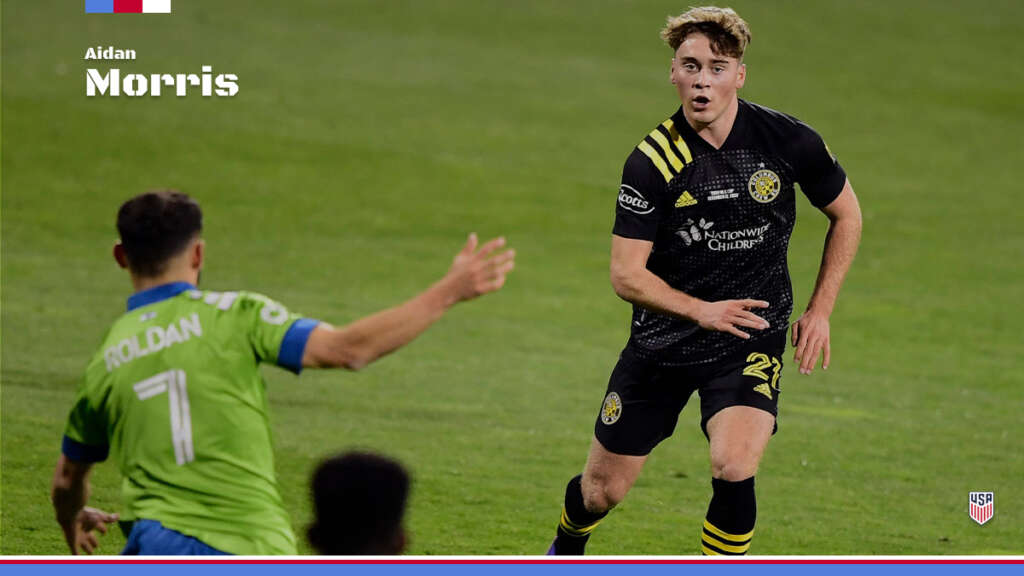
10 | Aidan Morris, Columbus Crew (2001)
Club Position: CM / Ideal Position: DM
Aidan missed all of 2021 due to injury. In 2020, Aidan became a regular sub and spot starter for Columbus and played the full 90 in the 2020 MLS Cup in a 3-0 win for Columbus. I am very fascinated to see how big of a role Aidan plays for Columbus this year. They will likely work him back slowly as a substitute and I would bet Aidan earns a starting spot before the end of the year. Aidan is a very athletic and aggressive, defensive minded midfielder.
What makes him special
His overall defensive game is really fantastic. He has both good awareness, speed and tenacity which make him capable of being that single danger mitigating 6 that the USMNT needs depth at.
Key growth area
If he can become a more consistent and dangerous passer Aidan is going to be a really exciting player.
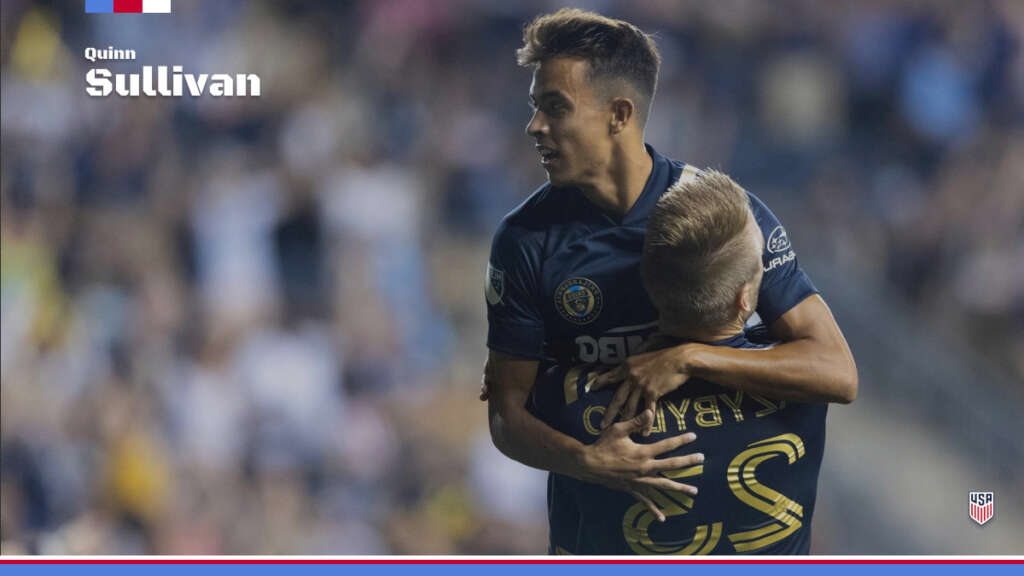
11 | Quinn Sullivan, Philadelphia Union (2004)
Club Position: CM / Ideal Position: AM
Quinn Sullivan is the second of four 2004s on the list behind Gaga. He is probably the most highly regarded 2004 player in the US player pool. He is another player that has been a consistent U20 callup over the last 5 months and will likely be a key center-mid option for Mikey Varas this summer. For Philadelphia, much like Paxten and Jack McGlynn, Quinn started to see more and more time with the Union last year and showed exciting flashes, including an overhead goal. He recently scored a banger for the U20s in a friendly vs FC Dallas. Quinn is one of the most likely candidates to move to Europe this year or next.
What makes him special
Quinn can really strike the soccer ball with his right foot. He’s a deadly shooter from all ranges. He also has a fierce, highly competitive mentality.
Key growth area
I’d like to see Quinn improve his off ball movement so he can get in more positions to use said deadly right foot.

12 | Brian Gutiérrez, Chicago Fire (2003)
Club Position: AM / Ideal Position: AM, WING
Brian might have been in line for a starting role before Chicago signed Shaqiri a few weeks ago, but even with that signing I expect Brian to have a significant role with the Fire this season and he is pushing for a spot on the US U20 roster. Last year Brian logged over 600 minutes and had an assist. He is a player that has consistently exceeded expectations as a prospect so it might be time to stop overlooking him. He is a bold, attacking playing that can play as a 10 and on the wing. After watching him at the Revelations Cup last year with the U20s, I couldn’t shake how much he reminded me of Matthew Hoppe. He’s fearless, confident and at times a little reckless, but I love his “go for it” mentality and he was one of the few bright players in the first game against Brazil.
What makes him special
I really love Brian’s mentality and the way he plays with reckless abandon. He is fearless and will try whatever feels right in the moment, it’s fun to watch.
Key growth area
I’d like to see him be a little more technically clean with the ball and a little more clinical. He’ll never be a super technical attacker, but a little improvement could go a long way with his confident mentality.
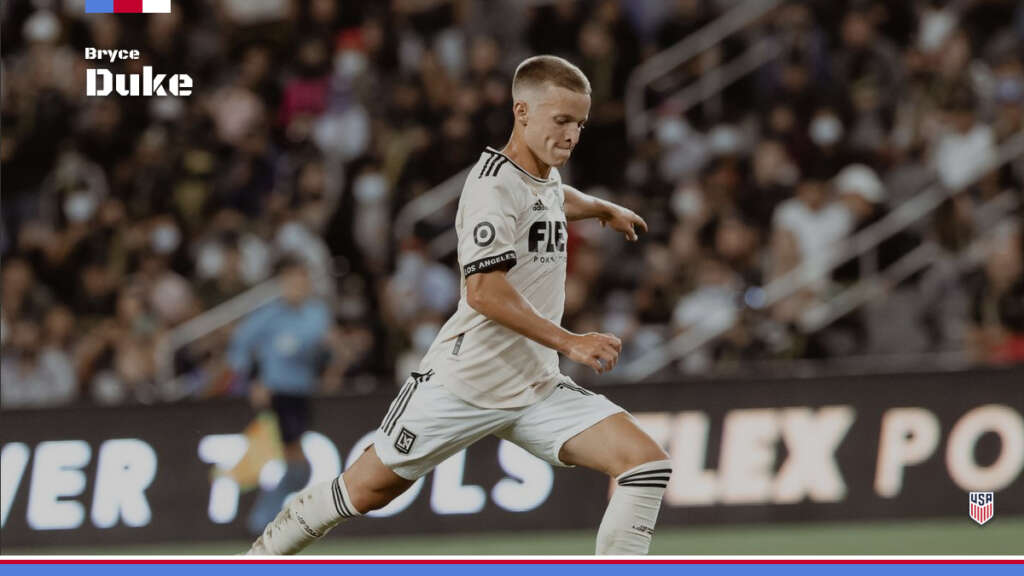
13 | Bryce Duke, Inter Miami (2001)
Club Position: CM, AM / Ideal Position: CM
Bryce was never able to get a consistent run of play from Bob Bradley in LAFC. There was a lot of midfield talent in LA and it didn’t seem like Bob trusted him too much. I think the move to Miami is going to be good for him. You never know what to expect when a young player moves to a new club, but Miami’s midfield is pretty underwhelming and Bryce should get a chance to be a starter in South Beach at some point this season. Bryce is true box to box midfielder that can provide value on offense and defense.
What makes him special
I really like the way Bryce distributes the ball and keeps it moving. He’s got a lot of different types of passes in his repertoire.
Key growth area
I would like to see Bryce become a little more goal dangerous. I think he has the skill set, he just hasn’t scored a lot of goals throughout his young career.
CONSISTENT SUBS
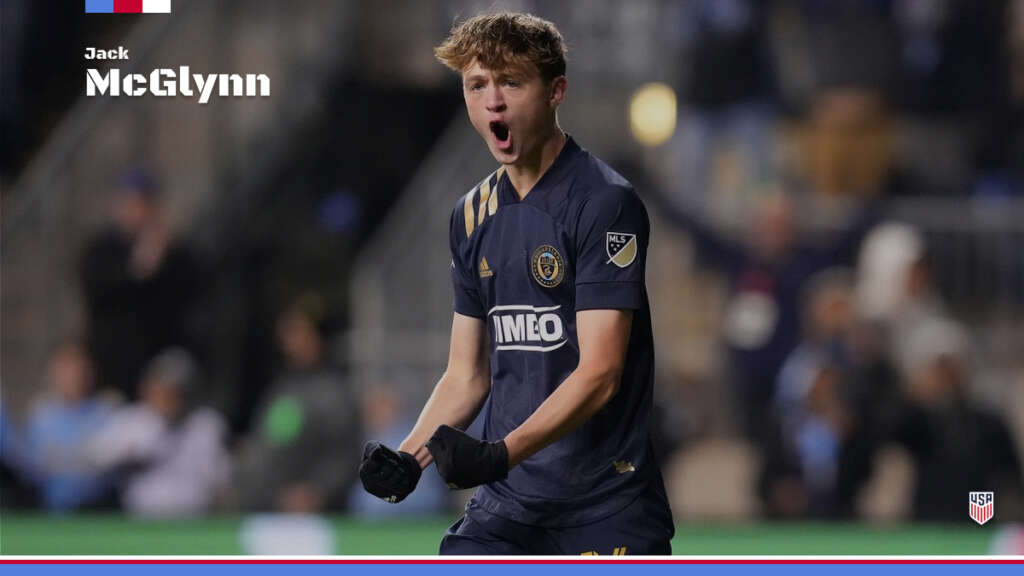
14 | Jack McGlynn, Philadelphia Union (2003)
Club Position: CM / Ideal Position: CM
Jack McGlynn is another Union prospect that saw a decent amount of time last year (600+ minutes) and with the Union trading Monteiro, he could be in for an even bigger role within the midfield. Jack is part of a very talented crop of 2003s and 2004s within Philadelphia’s system (they have five players on this list) and he is another player looking to make the U20 World Cup Qualifying team this summer. I am not as bullish on Jack as some analysts are. I am not sure the technical skills can overcome the physical limitations, but he’s still young and he could develop a little more, physically, as he gets older. It’s hard not to get a little excited about that smooth left foot.
What makes him special
He’s got a very talented left foot that he deploys as both a progressive passer and shooter.
Key growth area
I am hoping he can get a little quicker and stronger. If not, he’ll really need to develop a 6th sense for the game to overcome his mobility limitations.

15 | Matko Miljevic, Club de Foot Montréal (2001)
Club Position: LW / Ideal Position: LW, RW
Matko is an Argentinian-American who developed at the Argentinos Jr Academy in Argentina. There was a weird falling out with the club and after a long period of nothing, he was able to free himself of that contract and he signed with Montreal midway through the 2021 season. I wasn’t super impressed with what I saw from Matko last year. He seems to have lost some quickness from his Boca days and he’s looked a bit out of shape to me. He did one goal last year in five appearances. He was also brought in as a sub in Montreal’s CONCACAF Champion’s League match last week, so he is likely in for a fairly significant role. If Matko can return to his form of a few years ago he is a prospect worth keeping track of.
What makes him special
He has really quick feet which help be an effective 1v1 dribbler.
Key growth area
Fitness. He looked a bit out of shape and a little slow when I saw him in action for Montreal last year.
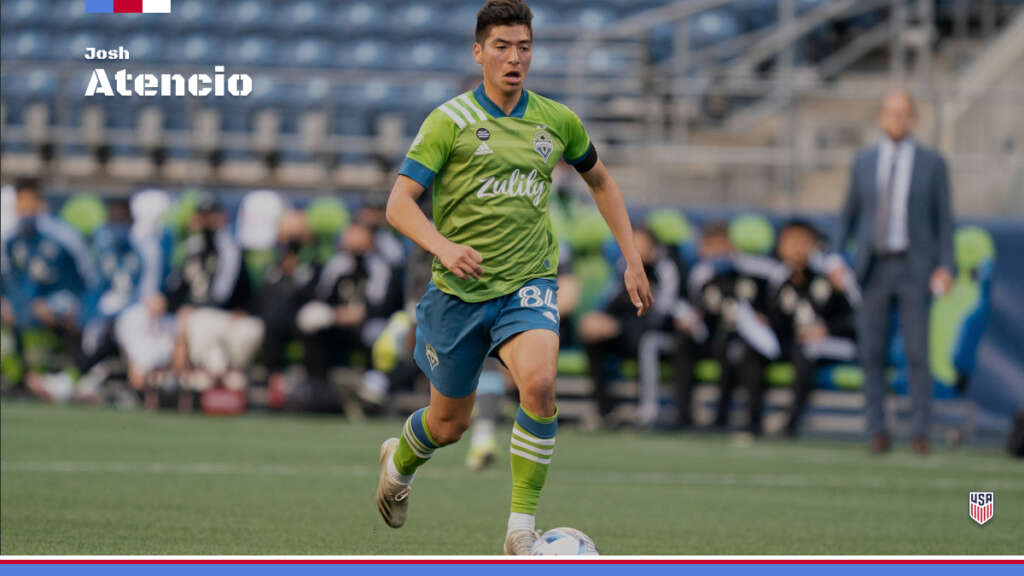
16 | Josh Atencio, Seattle Sounders (2002)
Club Position: CM / Ideal Position: DM, CB
Josh Atencio is going to be one of the key backup midfielders in Seattle’s 4-2-3-1 system. Last year Josh accumulated over 1,500 minutes and 18 starts because of a series of injuries to the Seattle midfield. I expect to see both of those numbers go down if Seattle has a little better luck. Cristian Roldan, João Paulo and Kelyn Rowe are all likely ahead of him in the depth chart and he’ll be competing with other talented prospects that narrowly missed this list: Danny Leyva, Reed Baker-Whiting and Obed Vargas. Even with this crowded midfield, he should carve out a nice role, especially late in games when Seattle is up and they need to preserve a lead. I still maintain that Josh’s future is at CB, but I’ve heard that Seattle sees him as a midfielder.
What makes him special
He has good defensive awareness, ball security and he can pick out a pass. He’s a little like James Sands with a thicker frame.
Key growth area
If he is going to stick in the midfield I’d like to see him be a bit more ambitious with his passing. He often sticks with the simplest safe play more times than not.
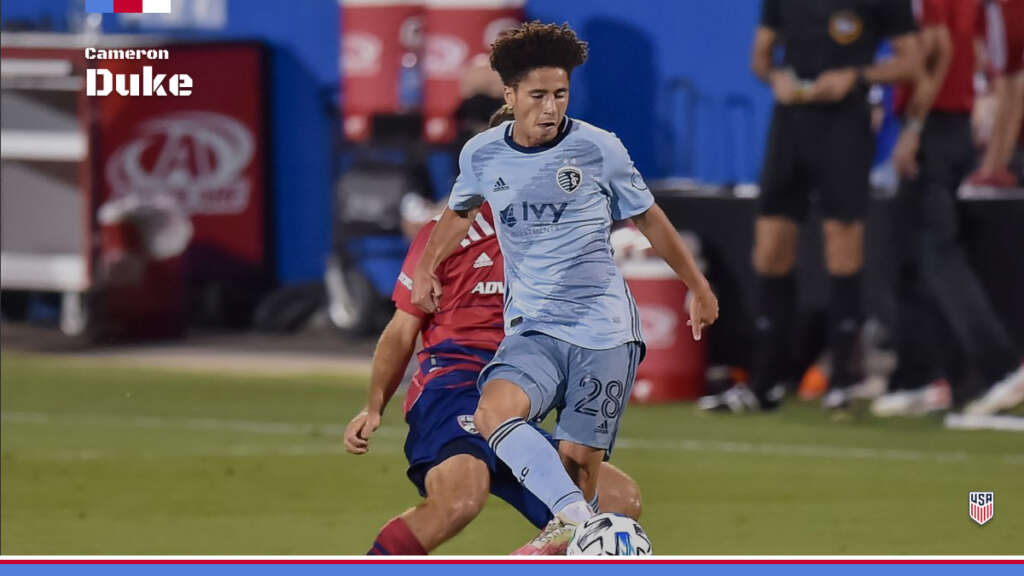
17 | Cameron Duke, Sporting Kansas City (2001)
Club Position: RB, CM / Ideal Position: RB
Cameron has played both as an 8 and as a RB for KC. Jaylin Lindsey is now with Charlotte and even though Graham Zusi is back for another year, he’s getting up there in years and you have to think there will be a fair amount of rotation happening at RB. The good news is I think RB is a better fit for Cameron Duke.
What makes him special
He’s a very pacey player that can break lines with his dribbling ability.
Key growth area
He’s small in stature and that makes him a little bit of a liability defensively, more specifically tackling and in duels. I’d love to see him get a little more consistently stuck in and add a little muscle mass to be more stout defensively.

18 | Ben Bender, Charlotte FC (2001)
Club Position: CM / Ideal Position: CM
Ben was the first overall selection by Charlotte as a Sophomore out of Maryland. At Maryland, Ben a United Soccer Coaches first-team All American after scoring 7 goals and 5 assists in his Soph season. I have not seen Ben play but from what I have read on him he is an intelligent and technical midfielder who is stronger on the offensive side of things. Ben should be able to compete for spot starts and bench minutes in the Charlotte midfield rotation.
What makes him special
Reports are that Ben is a very intelligent and aware midfielder. He is aware of his surroundings and threats and has the technical ability to create positive plays towards goal through dribbling, passing and movement.
Key growth area
Not sure, can’t find tape on him. Defense? We’ll find out.
BACK UPS WHO SHOULD GET AN OPPORTUNITY
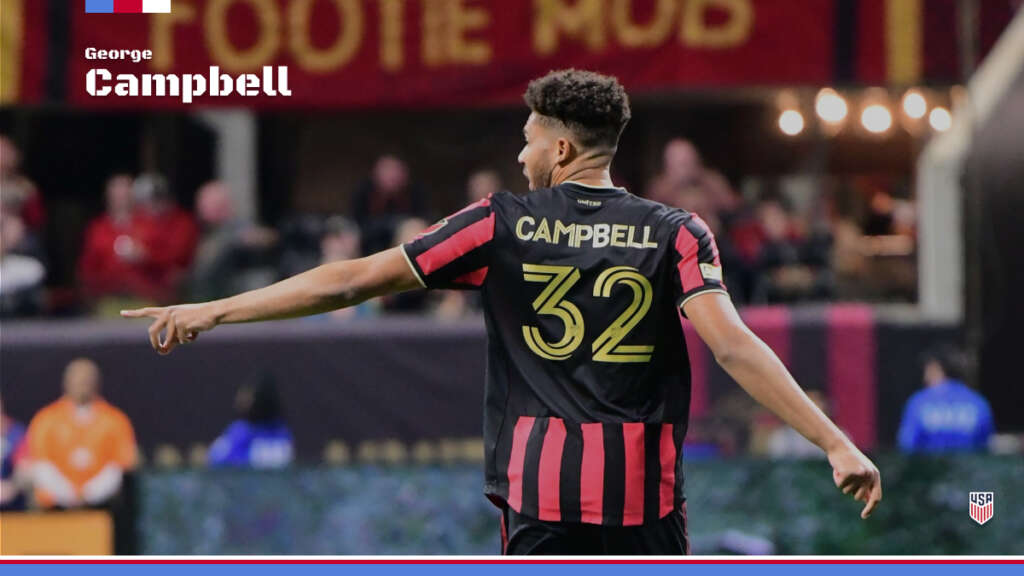
19 | George Campbell, Atlanta United FC (2001)
Club Position: RCB / Ideal Position: RCB
If Atlanta was to continue with a three-back formation George would be higher on this list, but it sounds like Atlanta is going to move to a four-back, with two CBs. I don’t see George surpassing Franco anytime soon, but I expect him to get more spot starts than last year and If Miles transfers abroad this summer, that would open up a spot for George to be a locked in starter. It’s also possible that Atlanta uses the 3-back system in some matchups in which case George would be added to the starting lineup.
What makes him special
George is a big and strong guy that has the ability to dominate in the air both defensively and as a set piece weapon, but what I like most about his game is his passing. He can pick out and execute a long diagonal and he is consistently looking for a line breaking pass.
Key growth area
I have noticed a concerning trend with George that he gets caught up field too often and he doesn’t have the foot speed of someone like Miles Robinson to recover. He needs to be more selective with his decisions to press up the field. His profile is very similar to John Brooks, but right footed.
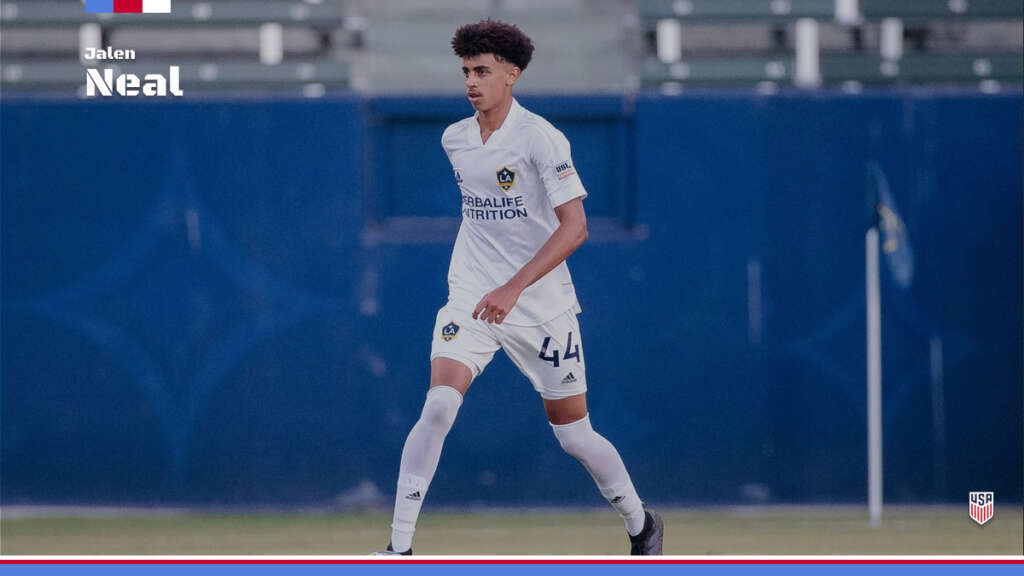
20 | Jalen Neal, LA Galaxy (2003)
Club Position: RCB, LCB / Ideal Position: RCB, LCB
It’s very hard for young CBs to break through because it requires a high level of physicality once you are playing on the first team. Jalen has been getting a bunch of praise from his manager this offseason and I think this could be the year he breaks through, if he does, he might be too low on this list.
What makes him special
He’s got a great feel for the game and a great touch and passing ability. He is one of the better ball playing CBs in the youth pool.
Key growth area
Like most young CBs, he needs to get stronger to be able to consistently compete with full grown, professional strikers.
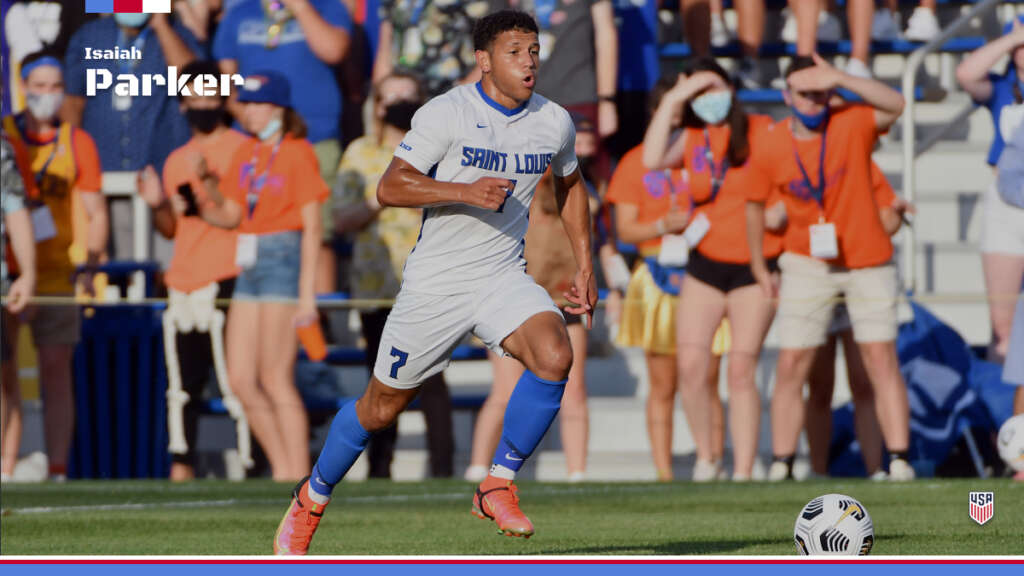
21 | Isaiah Parker, FC Dallas (2002)
Club Position: LB / Ideal Position: LWB
Isaiah was the third pick in this year’s Super Draft out of Saint Louis University, selected by FC Dallas as a Freshman. At Saint Louis, Isaiah played as a winger and was a Top Drawer Soccer first-team Freshman Best XI team. He scored 3 goals and added 7 assists. For Dallas, the plan is for him to play LB as the primary substitute behind recently traded for Marco Farfan. Isaiah has been getting a lot of minutes in preseason and I think he’ll see a decent amount of time coming on for Marco. I am not super high on Farfan, so I wouldn’t be surprised if Parker pushes for that starting role this season or next.
What makes him special
Isaiah is a pacey, attacking minded player who loves to go at people one on one.
Key growth area
Isaiah is going to need to adjust to the pace of play and build an understanding of how to find solutions in his new position. He’ll also have to learn his various defensive assignments.

22 | Cameron Harper, New York Red Bulls (2001)
Club Position: LW, RW / Ideal Position: LW, RW
Cameron Harper is a Scottish-American who has spent some time within the Celtic Academy. Cameron is a true winger that likes to take defenders on 1v1. I was surprised Cameron didn’t get more time last year. He is a talented player with some intriguing skills. It looks like NYRB is moving to a 4-3-3 system that will leverage more traditional wing play and I think this will be beneficial to Cameron’s success at the club.
What makes him special
Cameron is a very talented dribbling and can consistently beat people in 1v1 situations
Key growth area
Cameron, like a lot of young wingers, needs to become more consistent with his final product.
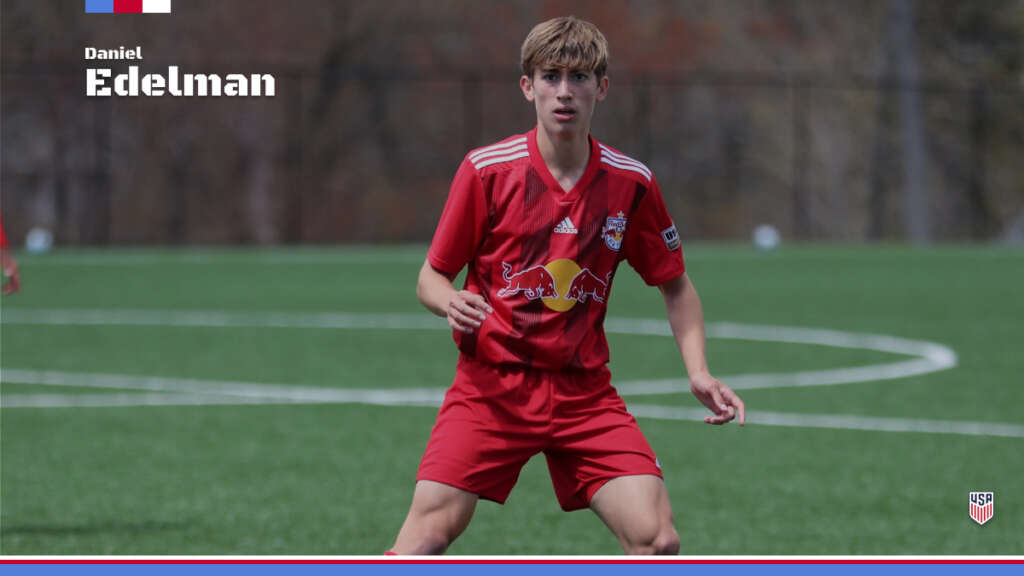
23 | Daniel Edelman, New York Red Bulls (2003)
Club Position: CDM / Ideal Position: CDM
Daniel Edelman signed a homegrown contract with New York Red Bulls this offseason and was one of the last 2003 born players to do so. Daniel had a nice season with NYRB II last year as the primary defensive midfielder. He also has had a few call-ups with with U20 team. He will be competing with Danny Leyva and potentially Moses Nyeman for the “Tyler Adams” role within the U20 team. He is another player that will benefit from NYRBs move to a 4-3-3. Daniel has the range and tenacity to play the center defensive midfield position that is responsible for cleaning up mistakes in the backline. I expect to see him get regular minutes at some point this season.
What makes him special
Daniel has good pace and I love his defensive bite. He’s the type of play that can be that sideline to sideline cleanup man for the midfield.
Key growth area
He needs to develop a little more to offer going forward. I’d like to see him become a more consistent and aggressive passer.

24 | CALEB WILEY, Atlanta UNITED (2004)
Club Position: LB / Ideal Position: LB
Caleb Wiley is a big reason why Atlanta was comfortable with transferring George Bellow overseas. Caleb has shown an incredible amount of development over the last 1.5 years and became the primary LB for Atlanta II last year. With George Bello off to Germany, Caleb is in line for a role with Atlanta. Andrew Gutman will be the starter but I expect Caleb to earn some minutes and spot starts. Caleb is also very much in the mix for one of the two LB positions within the US U20 squad. This time next year he’ll likely be ranked within the top 10 of this list.
What makes him special
He’s a very good 1v1 defender both from an awareness standpoint and because of his size and speed profile.
Key growth area
He’s been developing nicely as an offensively player, but I’d still like to see him become a more effective crosser.

25 | Brandan Craig, Philadelphia Union (2004)
Club Position: CB, CDM / Ideal Position: CDM
Brandan Craig is the final member of the Philadelphia contingent on this list. Brandan has played as a center-back for the majority of his youth career, but his future might be at defensive-mid and that is his best chance to get minutes with Philadelphia this year. I do think this is the year Brandan breaks through and gets his first minutes with the senior Union team. Brandan was called into the last US U20 camp where he’ll likely play center-back. He’s got the technical ability to play in Europe. The question is whether his physical profile will keep him at CB or move him to DM.
What makes him special
He is silky smooth on the ball and he is a very good progressive passer.
Key growth area
He needs to fill out and get stronger so he is able to consistently compete with grown men.
Club Representation
Philadelphia (5), NYRB (4), Atlanta (2), Chicago (2), DC (2), Charlotte (1), Columbus (1), Dallas (1), Kansas City (1), LA Galaxy (1), Miami (1), Montreal (1), NYCFC (1), San Jose (1), Seattle (1)
Positional Representation (IDEAL POSITIONS)
AM (5), DM (5), CM (4), LB (3), CB (2), Wing (2), RB (2), ST (1), GK (1)
Age Group Representation
2003 (8), 2001 (8), 2002 (5), 2004 (4)
You may like
-


MLS 2022 — American U21 Impact Rankings — Season Wrap Up
-
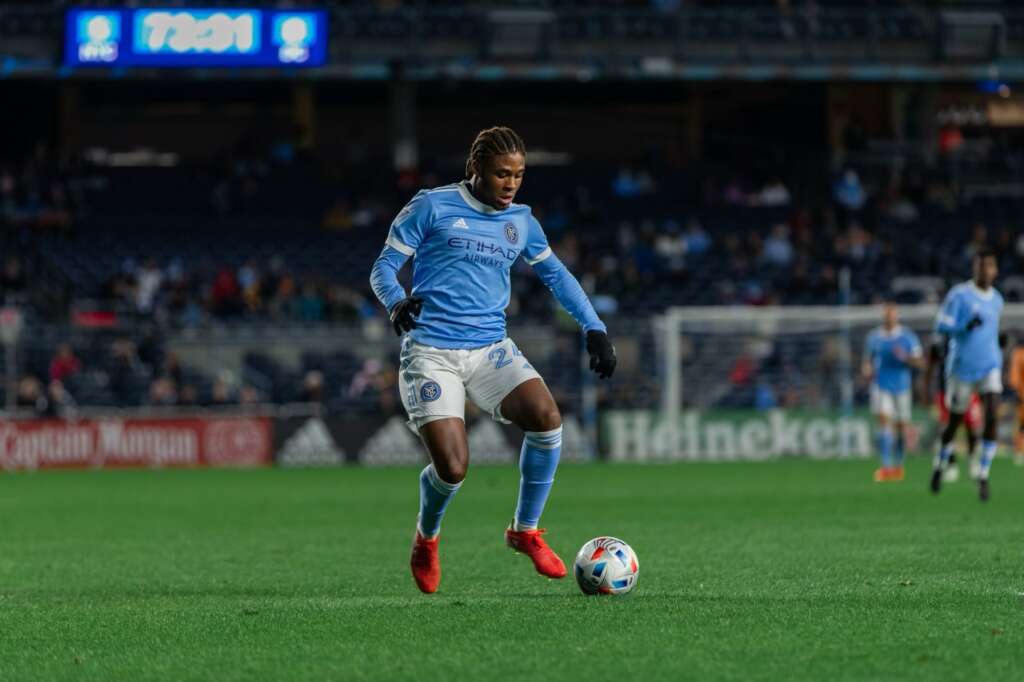

MLS 2022 — American U21 Impact Rankings — Version 15
-


Everything you need to know about the U.S. youth camps this September
-
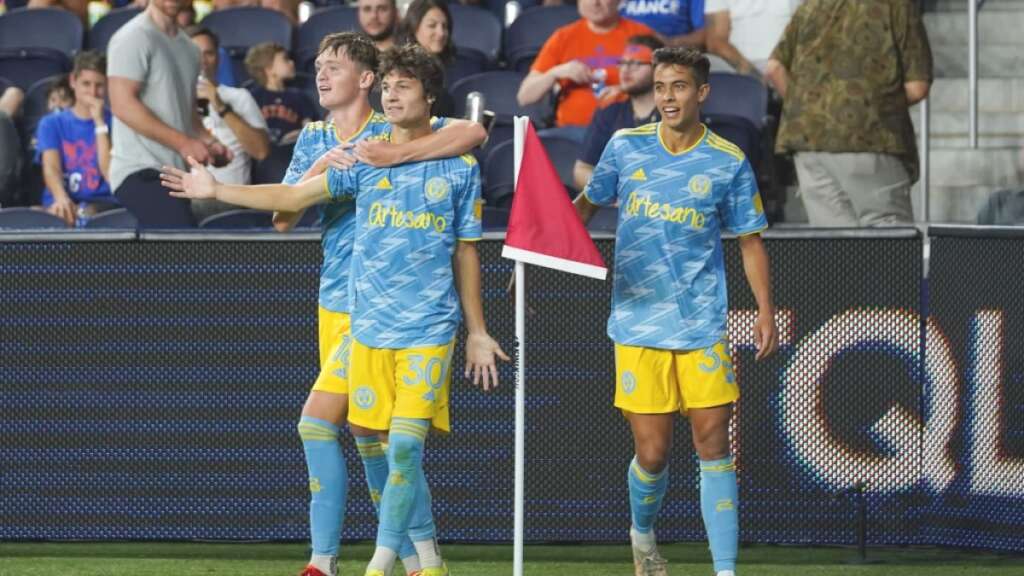

2022 Youth Series: MLS Club Youth Talent Rankings
-


2022 Youth Series: Top 20 Born In 2007
-
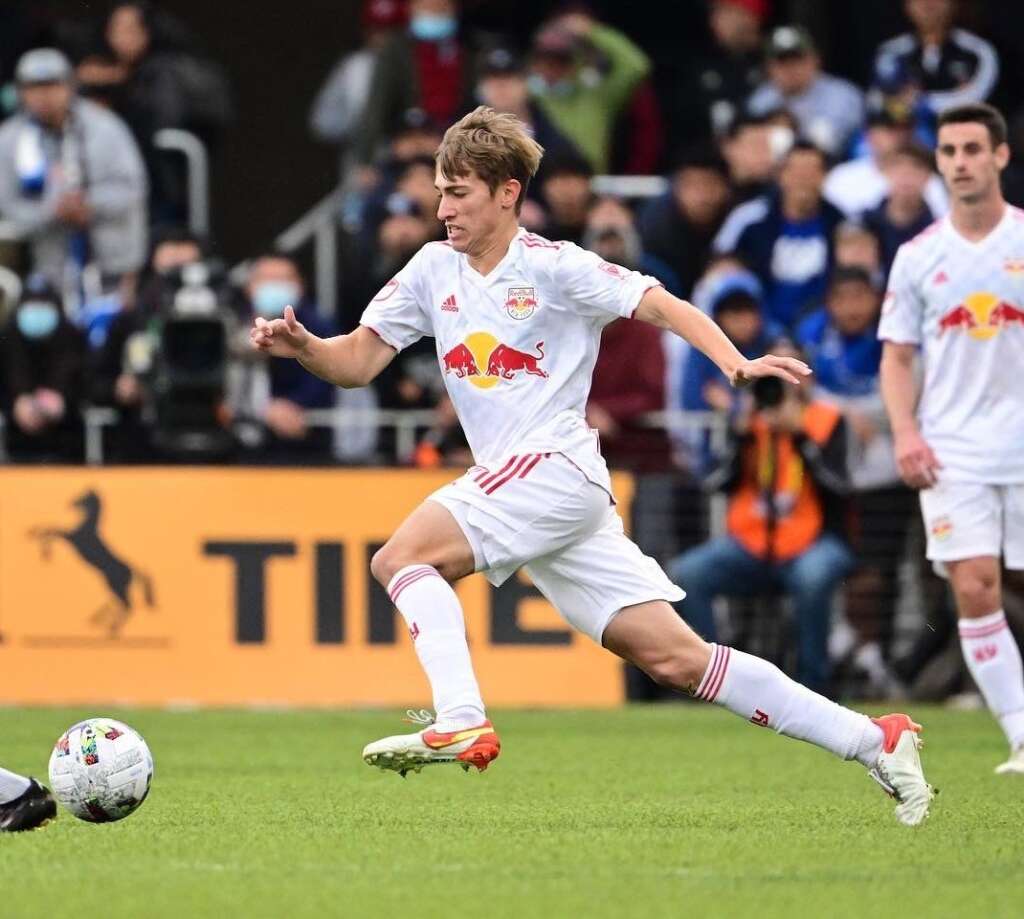

MLS 2022 — American U21 Impact Rankings — Version 14
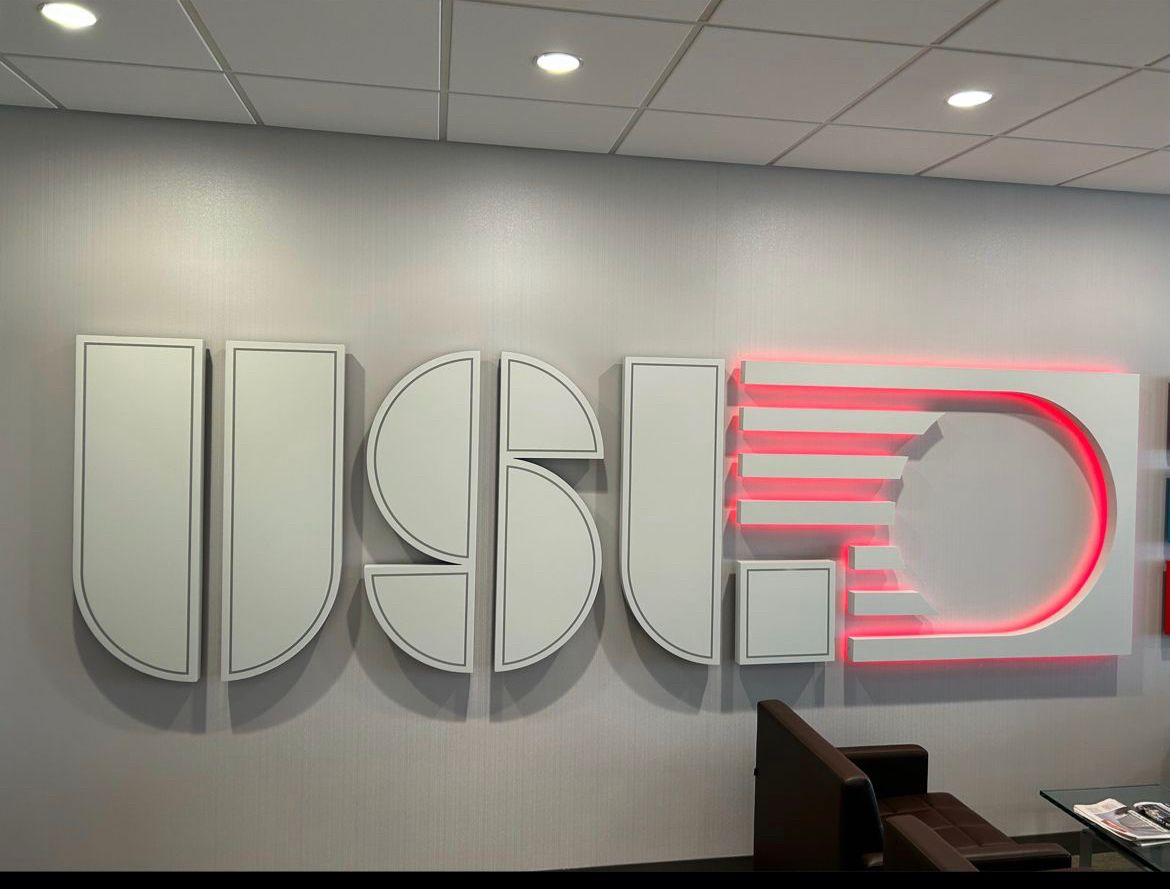
USL made national headlines when they announced on February 13th, 2025, their plans to launch a Division One league, followed by the announcement of promotion/relegation on March 19th for the new Division One league, the Championship, and League One. If sanctioned by US Soccer, USL Division One would be of equal status to MLS and compete for the best major soccer league in the U.S. The implementation of promotion/relegation in the USL would become the first in the U.S. and test the question asked for many years, “would pro/rel work in the U.S.” USL HQ informed the public that they planned to have the inaugural season of Division One during the 2027-2028 season with promotion/relegation beginning in 2028.
Until November 3rd, with the announcement of Tony Scholes being hired as the President of the Division One, only three teams have applied for membership to the inaugural season of Division one: Louisville City, North Carolina FC (who announced at the time of the Scholes news that they would fold until the launch of Division One), and Pittsburgh Riverhounds. There has been a rapid expansion of teams in the already existing leagues since the two announcements. Teams joining League One are: Fort Lauderdale FC (2026 debut), New York Cosmos (2026 debut), Port St. Lucie SC (2027 debut), Sporting Cascades FC (2026 debut), and Rodeo FC (2027 debut). Fort Wayne FC and Sarasota Paradise would also be joining League One from League Two (2026 for both teams). For the Championship, Reno, NV will once again have a team planned for a 2027 debut. Along with those teams, USL is actively working to expand to other markets. The markets and partners they are looking at are Brevard County, FL (Space Coast Pro Soccer), Riverside, CA (Riverside Pro Soccer), Brownsville, TX (City of Brownsville), Winter Garden, FL (Central FL Pro Soccer), Santa Rosa, CA (City of Santa Rosa), and Pensacola, FL (City of Pensacola).
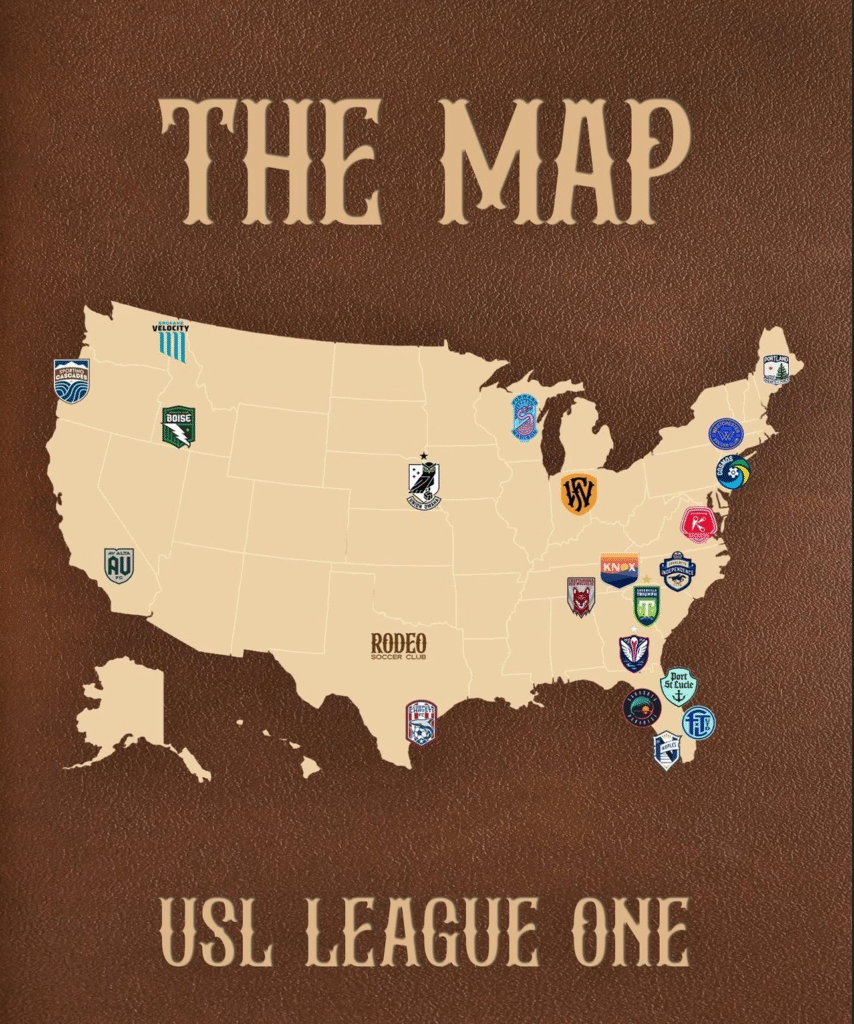
Along with these recently announced teams and partnerships, USL has teams joining the organization just in time for promotion/relegation that were announced prior to the February and March news. Starting with League One, these teams include: Corpus Christi FC (2026 debut) and Athletic Club Boise (2026 debut). As for the Championship, they will be adding Brooklyn FC (2026 debut), Sporting Jax (2026 debut), Atlético Dallas (2027 debut), Milwaukee Pro Soccer (TBD), USL Pro Iowa (TBD), Buffalo Pro Soccer (TBD), and Ozark United FC (2027 debut), while Santa Barbara Sky FC (2027 debut) would replace Memphis 901 FC.
Other than that, news on the Division One and promotion/relegation had been quiet until USL snatched Tony Scholes from the English Premier League. Tony Scholes will be the President of Division and help with the implementation of promotion/relegation. Scholes served as the chief football officer of the EPL and will join USL at the end of the EPL season. As of November 15, 2025, USL Division One has not been sanctioned as a division one league by US Soccer. The hiring of Scholes indicates that they are confident this new league will get approved or they have already been told it will, behind closed doors. The fact that we have not heard news on what the promotion/relegation format would be, and Scholes task would be to help implement it could mean that USL has not come to a decision on one. Since we do not have any ideas on what the format could be, I want to provide a possible option that they could go with.
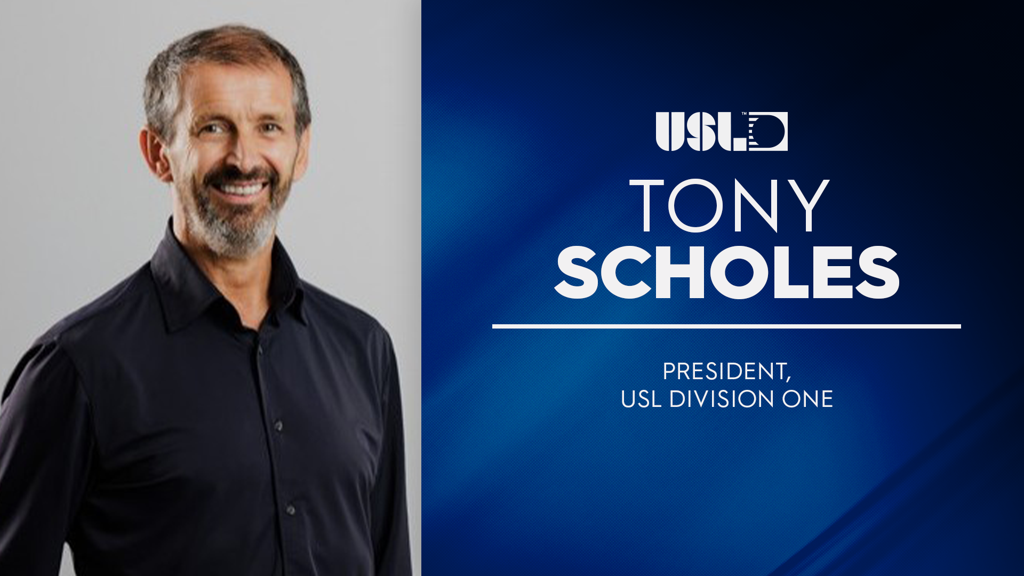
One of the biggest questions people have had since the USL announced promotion/relegation was how they would tie it to the playoffs. There is an option they could do, but it would result in only having one playoff. USL would have a playoff for Division One, but they would eliminate the concept for the Championship and League One. It might not be the most popular idea here in the U.S., but the main goal for the lower leagues is to get promoted, not to win a trophy. They would retain the league title for those two leagues with the winner being the team with the most points at the end of the season, just like how it is in the European leagues. The purpose is to create fairness for the top performing team(s) in the two lower leagues and reduce confusion. If there is a need for a playoff format, they could adopt the format the Bundesliga uses where the 16th best team in the first division and the 3rd best in the second division face-off in a two-leg match to see who would be in the first division the following season. The other option is the Championship concept, where the teams who finished 3rd through 6th in the table compete in a promotion playoff. The semi-finals are two-leg matches while the final is a single-leg match. The winner is promoted to the EPL. The execution of promotion/relegation must be done perfectly to retain fans, gain fans, prevent confusion, and be entertaining.
USL already has a division one league with their women’s Super League, who is competing against the NWSL. Currently, the S League has only nine teams (Brooklyn FC, Carolina Ascent FC, Dallas Trinity FC, DC Power FC, Ft. Lauderdale United FC, Lexington FC, Spokane Zephyr FC, Sporting Jax, and Tampa Bay Sun FC) to the NSWL’s 14 teams (3 teams in the works). The Super League will be adding an additional nine teams (Athletic Club Boise, New York Cosmos, Ozark United FC, Buffalo Pro Soccer, Chattanooga Red Wolves FC, Forward Madison FC, Indy Eleven, Oakland Soul SC, and USL Palm Beach) with all but three to have their inaugural season to be determined. What makes the S League unique from the rest of the soccer leagues in the U.S. is that they use a fall-summer schedule. Competing against a top five women’s league in the world is a tall ask, but it shows the ambitions of USL.
They are also willing to take risks by voting to pass promotion/relegation for the men’s league and have a fall-summer schedule for the S League. If the S League schedule format proves successful, it stands to reason that they would move the men’s leagues to the same schedule. It would also avoid the organization from having to fight MLS for viewership when the leagues are in play, especially when they launch a direct rival and are at their most ambitious point in their history. The same can be done for the S League if promotion/relegation is successful for the men. USL can start establishing lower women’s leagues and introduce promotion/relegation to the women’s game here in the U.S.
Many would say USL still stands no chance at competing against MLS, even with promotion/relegation and having a division one league. That is the case when you look at the quality of the players is finance, but that is the reason why the USL made these decisions based on the reports prior to the announcements and afterwards. Promotion/relegation and the introduction of a division one league could see an increase in investors. We are already seeing that with the likes of Gio Reyna joining Fort Lauderdale as an investor, BellTower Partners investing into USL, Sofia Huerta and Kasey Keller joining the Athletic Club Boise ownership group, and the Chickasaw Nation becoming an investor of the OKC for Soccer just this year alone. Then there is the expansion fee for MLS, MLS Next Pro, and the USL leagues. MLS charges an astounding $500 million! Yes, the money is used to construct a proper stadium, acquire players, etc., but at this point it will discourage many from purchasing a franchise license. MLS currently only has two leagues and one of them is advertised as a development league to prepare for MLS. The expansion fee for an independent team to join MLS Next Pro is unknown, but Sports Business Journal reported in 2024 that it is significantly cheaper than the USL Championship. The fee to join the USL Championship is $20 million while League One is only $5 million. These two fees are significantly lower than MLS and that will be more appealing to potential owners, but unlike the MLS fee, it is not enough for a stadium, training grounds, and players. As for what the fee is to join USL Division One, that is unknown at the moment.
I highly recommend reading the ESPN article by Jeff Carlisle titled “Will USL’s Move to Pro-Rel Change U.S. Soccer, Threaten MLS?” In there, Carlisle discusses the reasons behind the decision and that it is mostly financial. For example, a USL spokesperson said they expect to see an increase in commercial revenue by 15% to 30% due to promotion/relegation. Also, the former owner of San Diego Loyal lost $40 million in 4 seasons. As for the reaction from MLS, we have not heard one yet. The only possible reaction we have seen from them is what the former MLS Next Pro president, Charles Altchek, told to Backheeled back on March 6th, 2025. In the interview, he told them they aim to have 40 to 50 teams and a possible second league with one of the MLS Next Pro leagues being a second division, putting it in direct competition with USL Championship. The biggest question is, whichever league that is, can compete for fans? Due to the Apple TV deal, we currently do not have the ratings of MLS Next Pro. The closest idea we have is the attendance, which is 5,580 for USL Championship per match to MLS Next Pro’s 3,361, according to Transfermarkt. Unlike the attendance, the viewership for USLC is much higher where the season premiere match had 453,000 viewers. MLS Next Pro’s massive expansion plan announcement date was either a coincidence, or MLS got word USL’s promotion/relegation implementation with the division one news, and this was their response. I will let you come to your own decision.
It seems, as of right now, it appears MLS will sit back and wait to see how the USL’s Division One and promotion/relegation will play. Division One and promotion/relegation will either be successful for USL and lead them to the financial success they are hoping for or lead to the possible collapse of USL. American sports fans are not the only ones keeping their eyes on USL now, but the rest of the soccer world is after their two massive news. The coming years are going to be exciting times for American soccer!
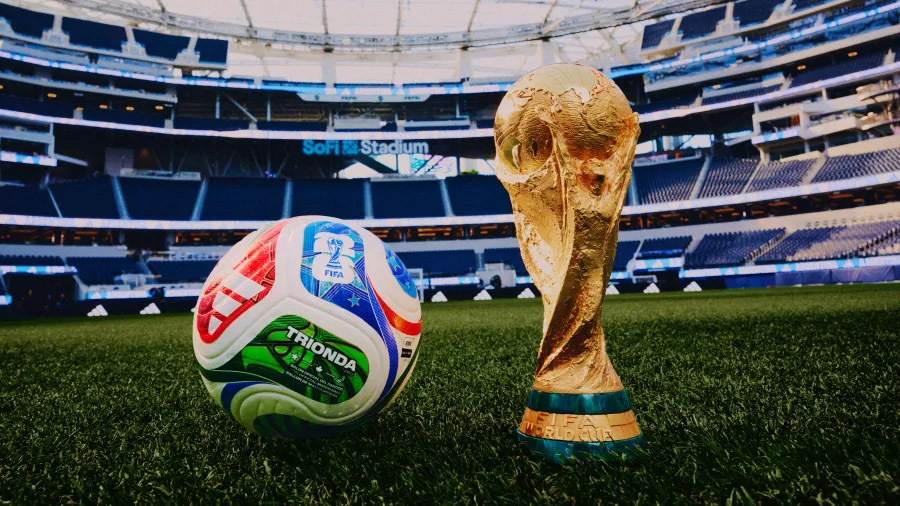
From Maradona to Messi: A Quick Look at World Cups 1986–2022
Thomas Deschaine (@uskeeper on X and us_keeper on Instagram)
A quick look back at the last ten World Cups reveals how the world’s greatest sporting event has evolved and grown through the decades. With over 200 days until the 2026 FIFA World Cup kicks off, here’s a high-level recap of the tournaments that shaped its legacy, and a glimpse of what’s next.
1986 – Mexico
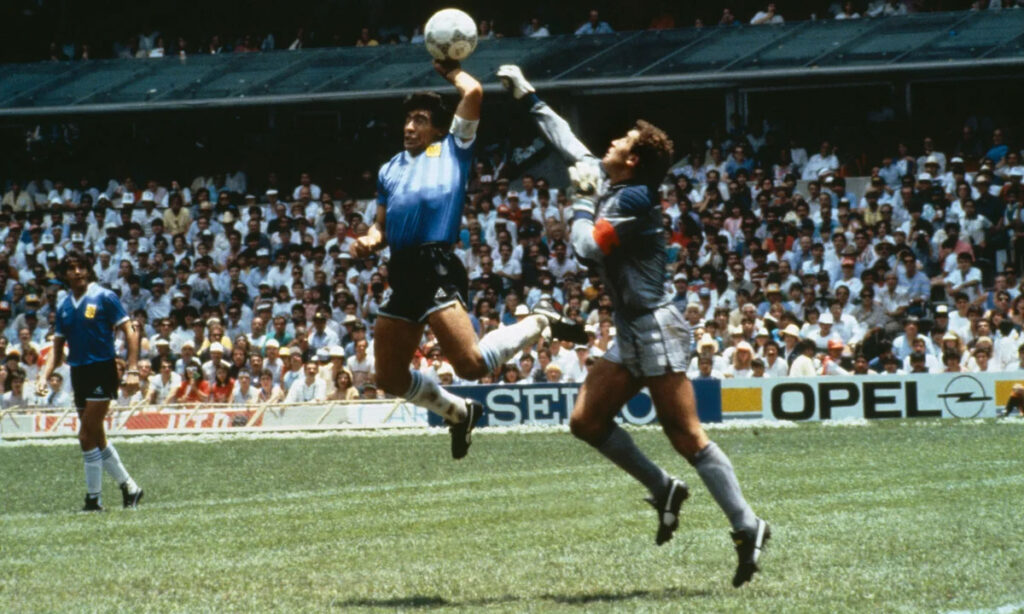
Diego Maradona delivered a World Cup for the ages, scoring both the “Goal of the Century” and the infamous “Hand of God” in the same match, then leading Argentina past West Germany to claim their second World Cup title.
1990 – Italy

The USA returned to the World Cup after a 50-year absence in what became the lowest-scoring tournament in history, as West Germany edged Argentina 1–0 on a late penalty. It marked West Germany’s final World Cup before reunification.
1994 – United States
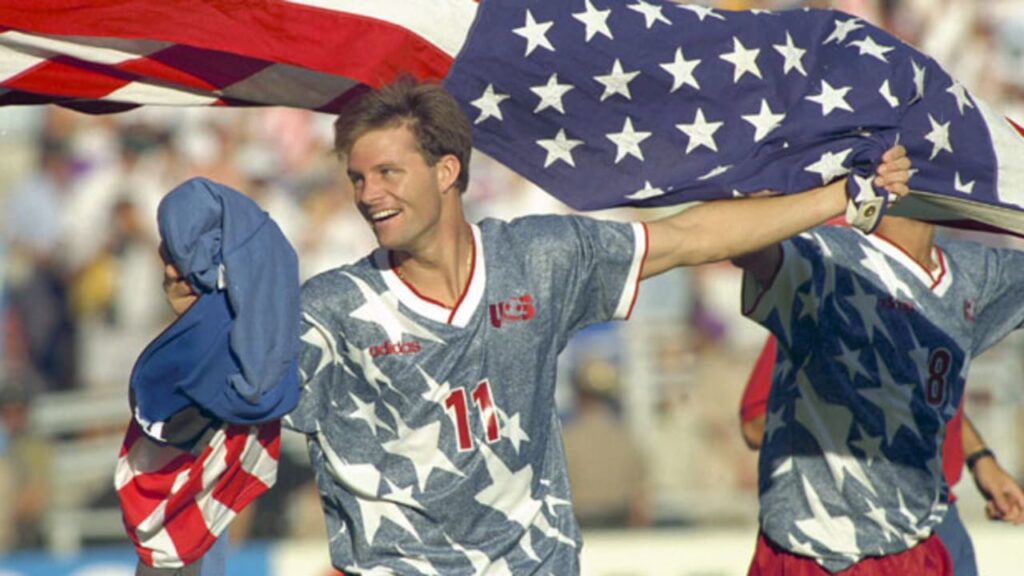
The USA hosted its first-ever World Cup, setting all-time attendance records as Brazil defeated Italy in the tournament’s first final decided by a penalty shootout in front of the largest crowds in US since the 1984 Olympics.
1998 – France
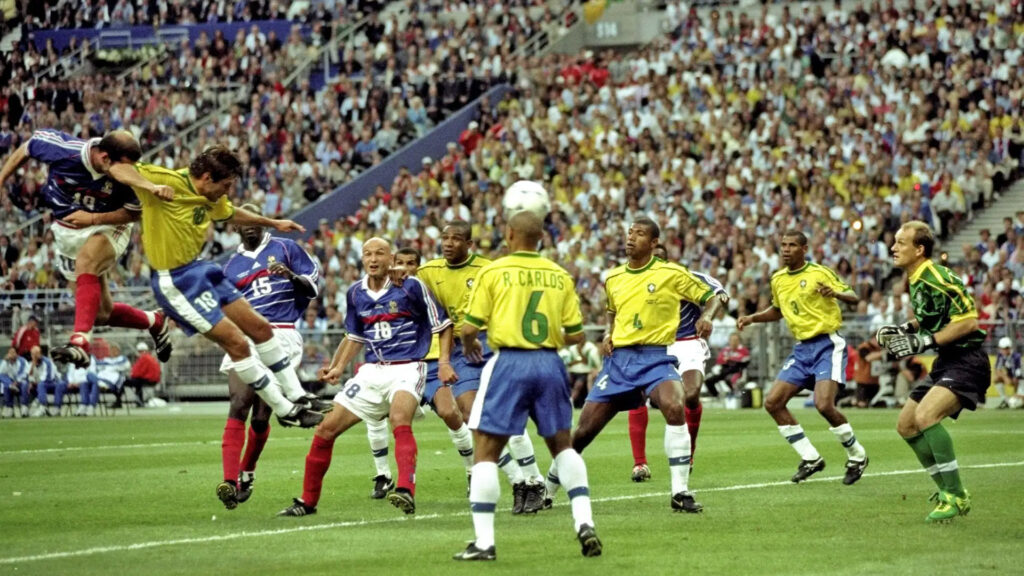
FIFA’s first 32-team World Cup saw host nation France capture its first-ever title, becoming the seventh country to win the trophy. Led by Zinedine Zidane triumphed on home soil with a commanding victory over defending champions Brazil.
2002 – South Korea/Japan
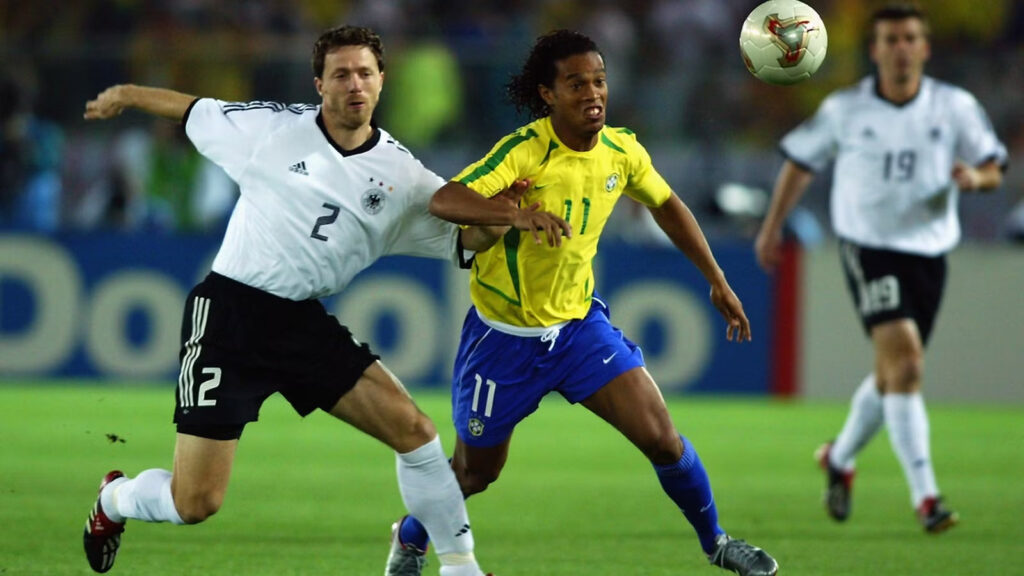
The first World Cup with co-hosting nations saw South Korea stun many by reaching the semifinals, while Brazil claimed their fifth title, powered by Ronaldo’s two goals in the final against Germany.
2006 – Germany

Germany came up short on home soil, losing in extra time to eventual first-time finalist Italy in the semifinal. Italy went on to claim its fourth World Cup, edging France on penalties in a final forever marked by Zidane’s infamous headbutt in extra time.
2010 – South Africa
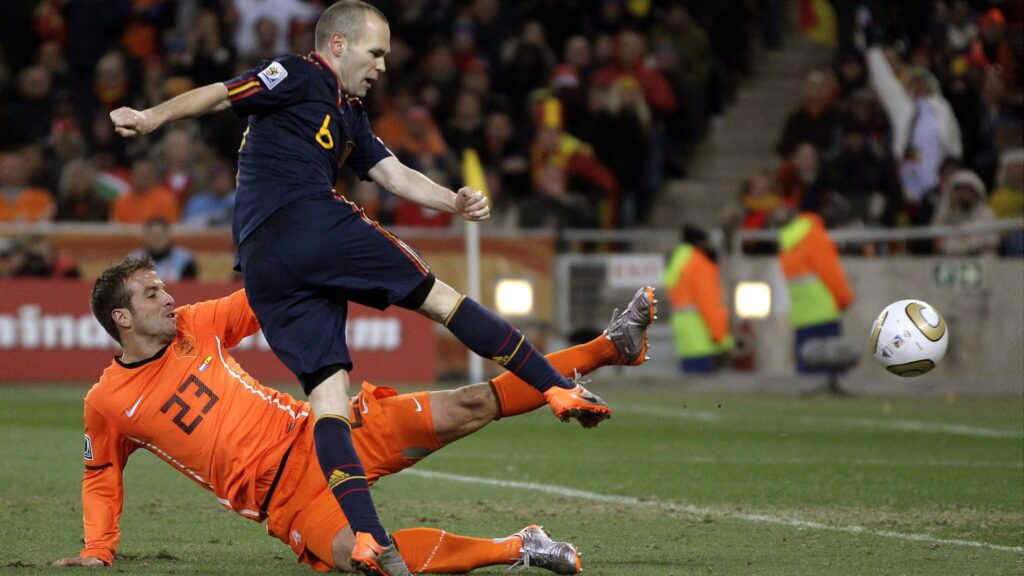
The first World Cup hosted by a CAF nation, South Africa, saw the host nation become the first ever to fail to advance past the group stage. Meanwhile, Spain captured their first World Cup, showcasing their tiki-taka mastery and defeating the Netherlands in extra-time with Andrés Iniesta’s decisive goal.
2014 – Brazil
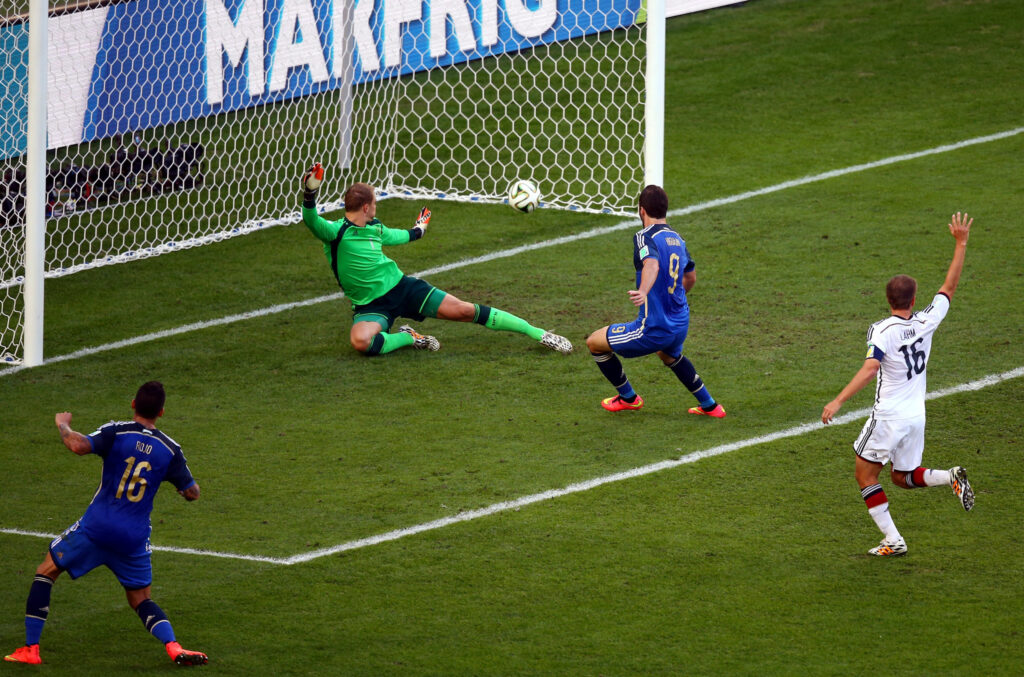
Host nation Brazil reached the semifinals on home soil but suffered a shocking 7–1 defeat to Germany and then fell 3-0 to the Netherlands in the third-place match. Germany went on to defeat Argentina in extra time, with Mario Götze scoring the decisive goal, while Lionel Messi claimed the Golden Ball as the tournament’s best player.
2018 – Russia
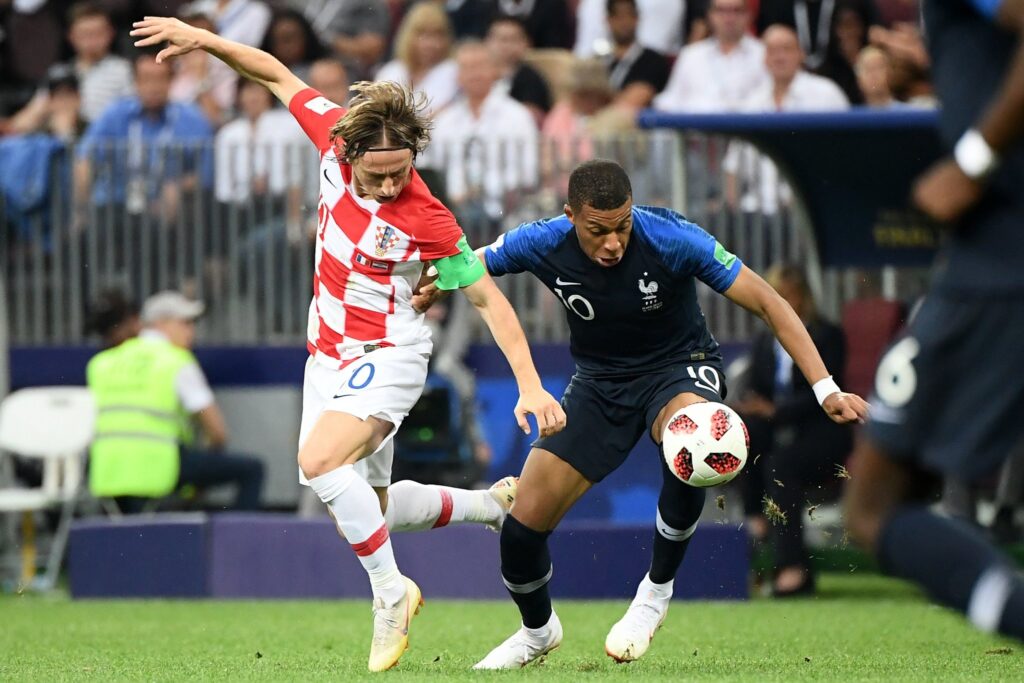
France’s golden generation, spearheaded by tournament Best Young Player Kylian Mbappé, captured their second World Cup title with a thrilling 4–2 victory over Croatia, led by Golden Ball winner Luka Modrić.
2022 – Qatar

The 2022 World Cup, overshadowed by controversies over migrant worker treatment and extreme heat, which pushed the tournament to November and December, ultimately delivered a historic finale. Lionel Messi achieved crowning glory as Argentina triumphed on penalties in a thrilling 3–3 final against France, highlighted by Kylian Mbappé’s hat-trick.
2026 – United States/Mexico/Canada
The 2026 World Cup will feature a major expansion from 32 to 48 teams and, for the first time ever, be hosted by three nations. Mexico will make history as the first country to host matches in three different World Cups, while the United States becomes the sixth nation to host at least twice. What unforgettable moments will define this landmark tournament?
USMNT
One Home or Many? The Debate Over a Primary Venue for U.S. Soccer
Published
1 month agoon
October 16, 2025
Thomas Deschaine (@uskeeper on X and us_keeper on Instagram)
The logics of the United States make it almost impossible for the USMNT or USWNT to have a primary venue to play all of their home matches but a trend of playing in a handful of stadiums has been developing over the last couple of cycles. US Soccer says there are specific factors behind where matches are played, some make sense, while others come across as lazy or lacking creativity.
If and when Major League Soccer aligns with the FIFA calendar and observes international breaks, more MLS stadiums could become available for matches. While not all MLS venues currently feature natural grass, US Soccer has indicated they would be willing to invest in installing grass, though at a cost of around $500K and with potential concerns about surface reliability.
Global Approach to Scheduling
Many of the top-tier international teams play their World Cup qualifiers and other critical matches in a primary venue or two. Here’s a sample of some of those countries and generally where they play based on my research.
Here are some of the more notable nations that play nearly all of their home matches at a single venue, a setup made practical by their smaller size and simpler logistics, which also makes it easier for fans.
Germany and Spain are known for rotating their non-critical home matches across multiple venues.

Argentina-Estadio Monumental (River Plate)
Belgium– King Baudouin Stadium (Brussels)
Colombia-Estadio Metropolitano Roberto Meléndez
England-Wembley Stadium
France– Stade de France (Saint-Denis, near Paris)
Italy-Stadio Olimpico
Northern Ireland-Windsor Park (Belfast)
Norway-Ullevaal Stadion (Oslo)
Portugal– Estádio da Luz (Lisbon)
Republic of Ireland-Aviva Stadium (Dublin)
Scotland-Hampden Park (Glasgow)
Uruguay-Estadio Centenario
Wales-Cardiff City Stadium
What’s in a location?
Here’s a look at the past few cycles, highlighting the USMNT’s home matches and the venues they’ve used. While US Soccer has clarified that they don’t control Gold Cup or Nations League venue selection, a point still under debate, they do manage the locations for Friendlies and World Cup qualifiers and continue to review and adjust those choices.
2026 Cycle (Matches Scheduled Through the end of 2025) – 46 Home Matches – 30 unique cities
So far, half of the USMNT’s home matches in the 2026 cycle have been held across eight venues. Only two more windows, March and May/June, remain for Friendlies before the 2026 World Cup.
- 4-AT&T Stadium, Arlington, Texas
- 4-Energizer Park, previously CityPark, St. Louis, Missouri
- 4-Q2 Stadium, Austin, Texas
- 3-Inter&Co Stadium (previously Orlando City Stadium and Exploria Stadium, Orlando, Florida
- 2-Allegiant Stadium, Paradise, Nevada
- 2-Geodis Park, Nashville, Tennessee
- 2-Rentschler Field, East Hartford, Connecticut
- 2-TQL Stadium, Cincinnati, Ohio
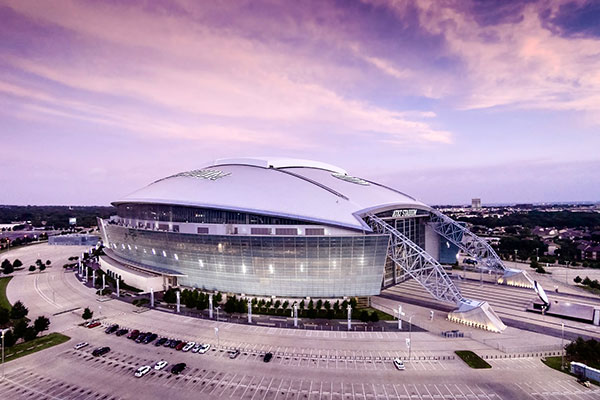
AT&T Stadium, Arlington, TX
2022 Cycle – 43 Home Matches – 24 unique cities
I can almost give US Soccer a pass on city and venue selection during the 2022 cycle, given the global circumstances at the time. That said, it’s interesting that they scheduled three consecutive home World Cup qualifiers in Ohio, with final round two matches in Columbus. Columbus has been a recurring choice, hosting multiple qualifiers in 2014, 2018, and 2022, handling one match each during both the semifinal and final rounds of qualifying in 2014 and 2018.

Lower.com, Columbus, Ohio
2018 Cycle – 47 Home Matches – 33 unique cities
During the 2018 cycle, the USMNT played in a wider variety of cities and venues. Aside from four matches in Carson, California for the January camp, they only repeated a location eleven times.

Dignity Health Sports Park, Carson, CA
2014 Cycle – 43 Home Matches – 29 unique cities
During the 2014 cycle, the USMNT repeated cities twelve times, but only two cities hosted more than two matches: Carson, California, where two of three games were for Camp Cupcake, and Kansas City, Kansas, which hosted three matches.

Children’s Mercy Park, Kansas City, Kansas
2010 Cycle – 35 Home Matches – 18 unique cities
One of the leanest home schedules in recent cycles saw the USMNT play in just 18 different cities, with 11 of them hosting only a single match. Over half of their home games were concentrated in four cities: Carson, California (7 matches); Chicago, Illinois (5 matches); and Foxborough, Massachusetts and Washington, D.C. (3 matches each).
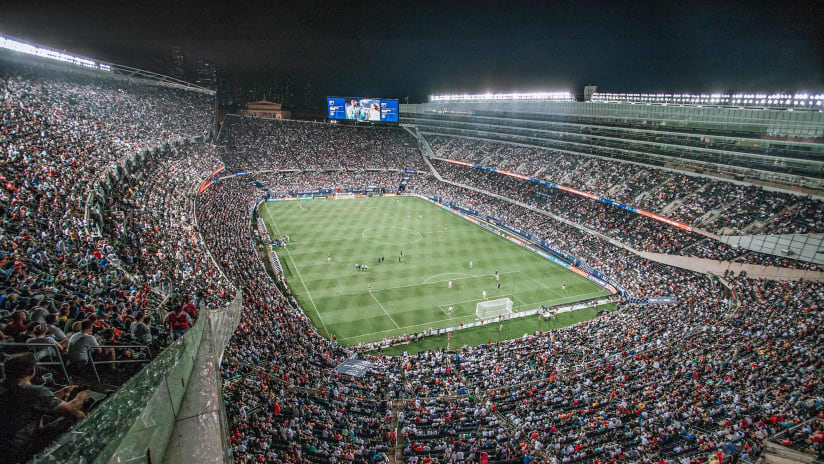
Soldier Field, Chicago, IL
2006 Cycle – 44 Home Matches – 24 unique cities
The USMNT played eight matches in Foxborough, Massachusetts—double the number held in the next two cities, Columbus, Ohio, and Miami, Florida, which each hosted four matches. Notably, the team has excelled in Foxborough, losing only once in 22 games played there.

Foxboro Stadium, Foxborough, MA
2002 Cycle – 38 Home Matches – 16 unique cities
During the 2002 cycle, California was clearly a preferred destination for the USMNT, hosting matches in five different cities across twelve games. Foxborough, Massachusetts, and Washington, D.C. each hosted five matches as well.

Rose Bowl Stadium, Pasadena, CA
1998 Cycle– 40 Home Matches – 21 unique cities
Washington D.C. was the city of choice for the USMNT during the 1998 cycle playing six matches. The USMNT would also play more than two matches in Los Angeles, California (5 matches), Foxborough, Massachusetts (4 matches) and Pasadena, California (3 matches) while playing only one match in twelve other cities.
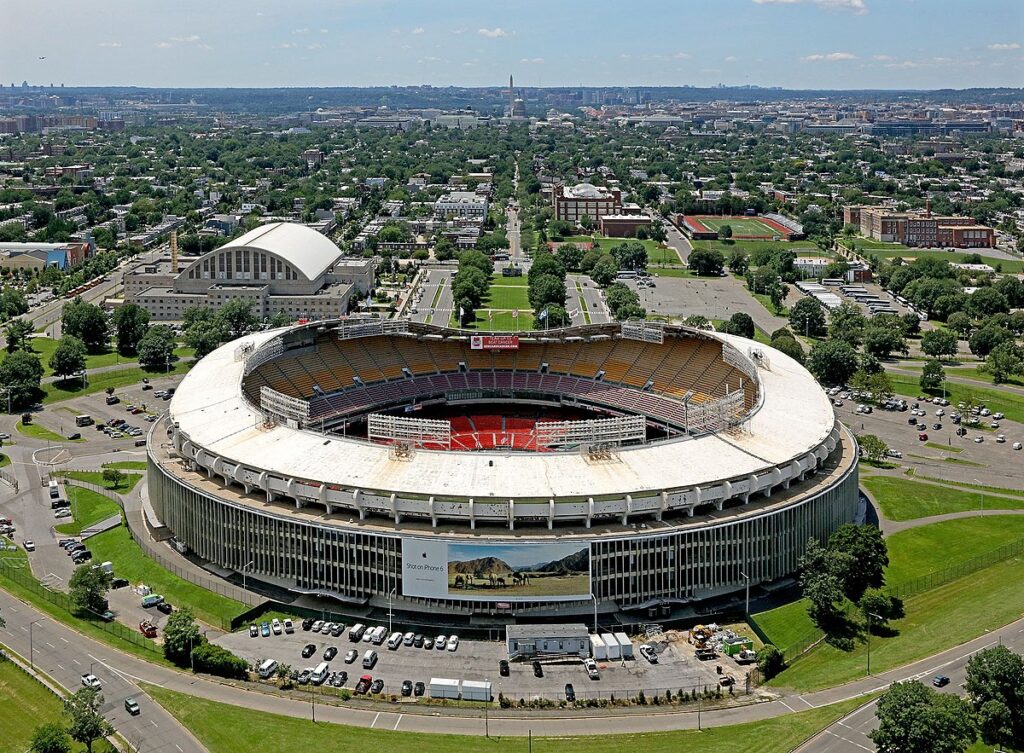
RFK Stadium, Washington, DC
Long Term Venue Strategy
While US Soccer may favor a single venue for most USMNT and USWNT matches, doing so would limit access for thousands of fans across the country. However, with the move to Georgia and the Arthur M. Blank U.S. Soccer National Training Center set to open in early 2026, ahead of the World Cup, it’s likely that future matches will focus on venues within three to four hours of Atlanta. We can expect the majority of games to continue taking place in roughly ten to twelve core cities.
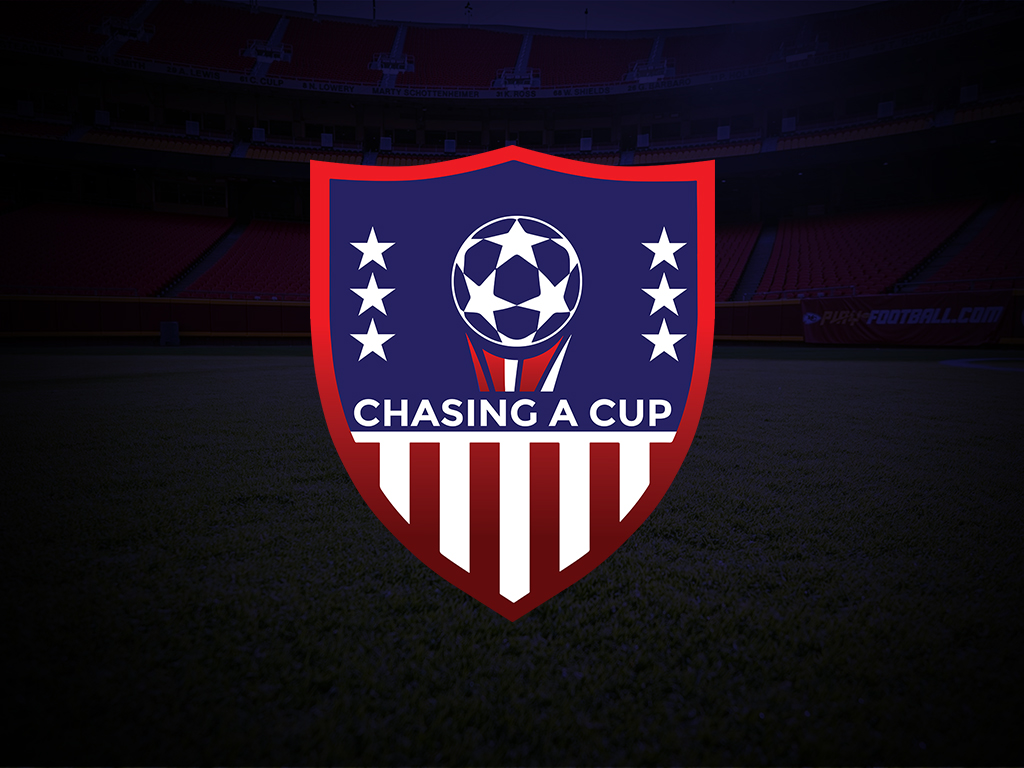

USL’s American Soccer Dream

From Maradona to Messi

One Home or Many? The Debate Over a Primary Venue for U.S. Soccer

Trending
-

 Club News1 year ago
Club News1 year agoAmerican Transfers: Stock Up & Stock Down
-
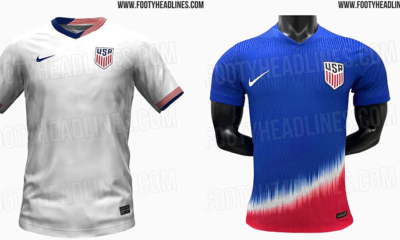
 USMNT2 years ago
USMNT2 years agoUSMNT Kits Come in Different Styles and Colors
-

 Club News6 years ago
Club News6 years agoJulian Vincente Araujo
-
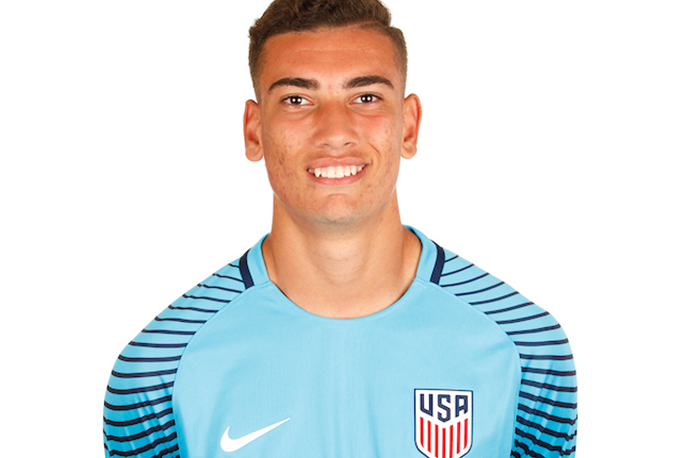
 Club News5 years ago
Club News5 years agoCJ dos Santos, Benfica
-

 USMNT5 years ago
USMNT5 years agoA Hidden Gem: Barça Residency Academy
-
USMNT3 years ago
World Cup Format History
-

 USMNT2 years ago
USMNT2 years agoIs the MLS Specifically Targeting Expansion to USL Cities?
-
USMNT6 years ago
MLS Quota

